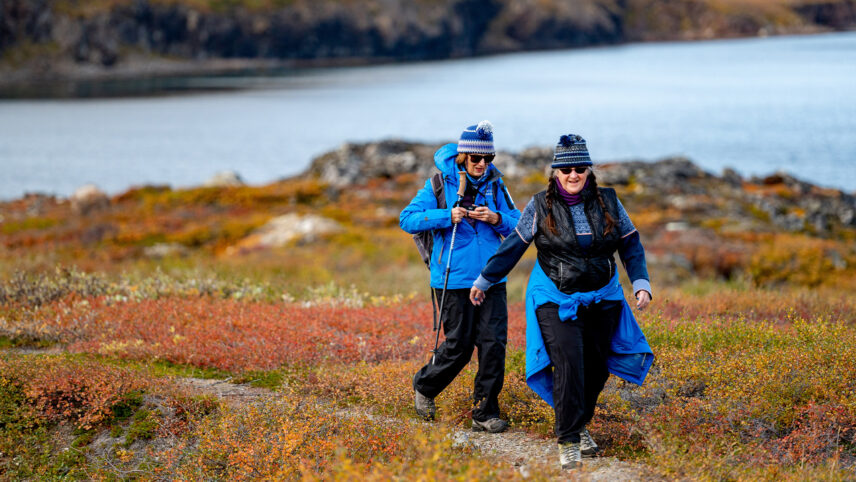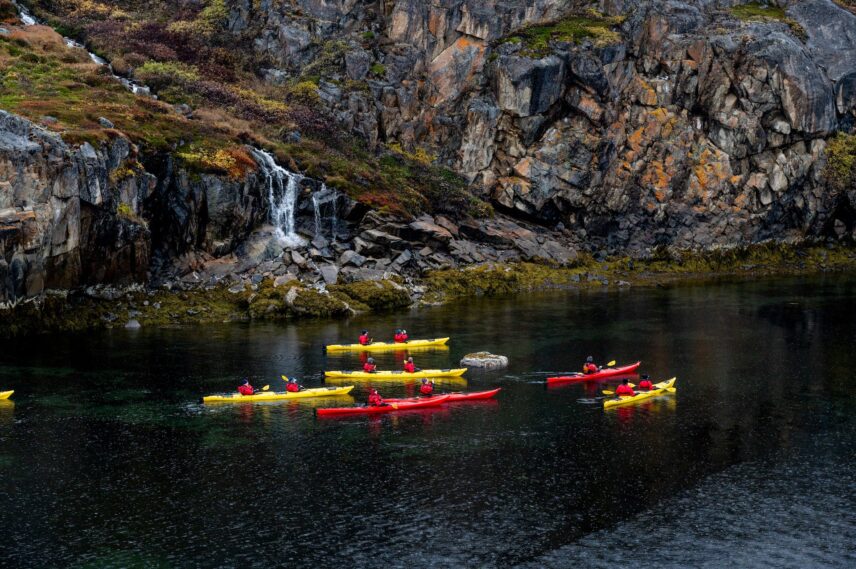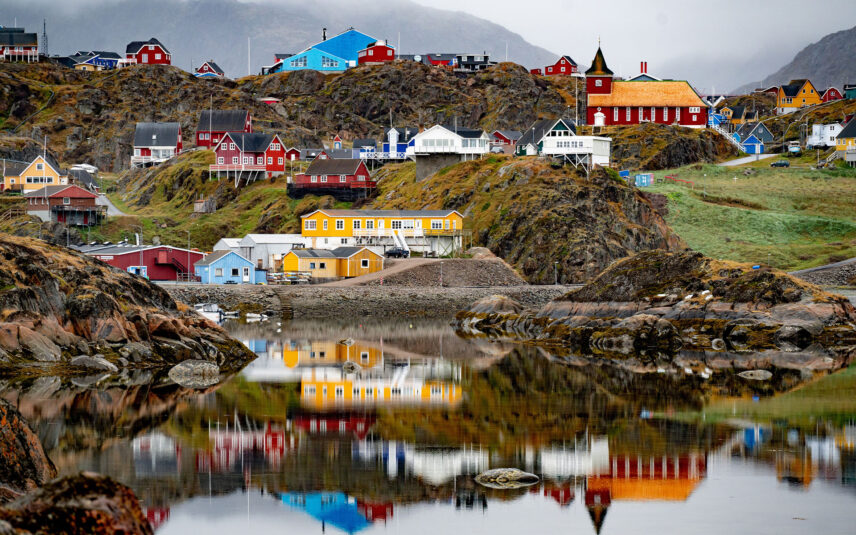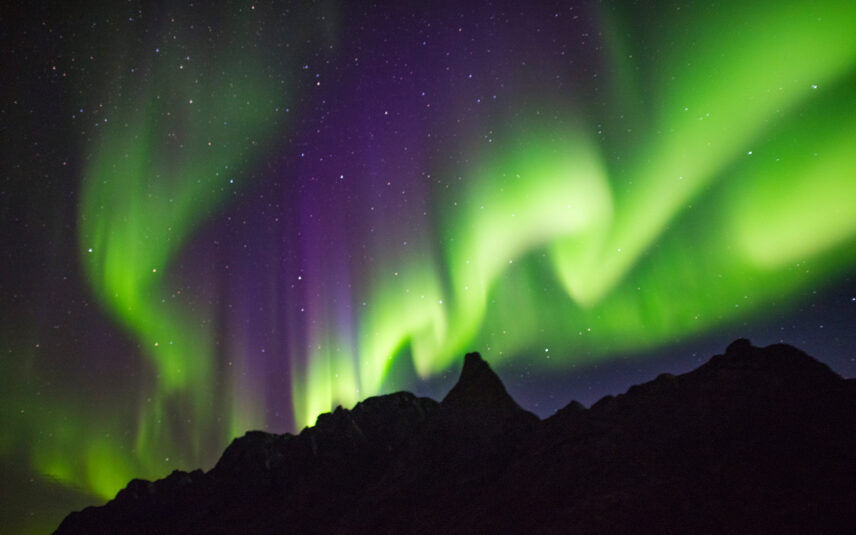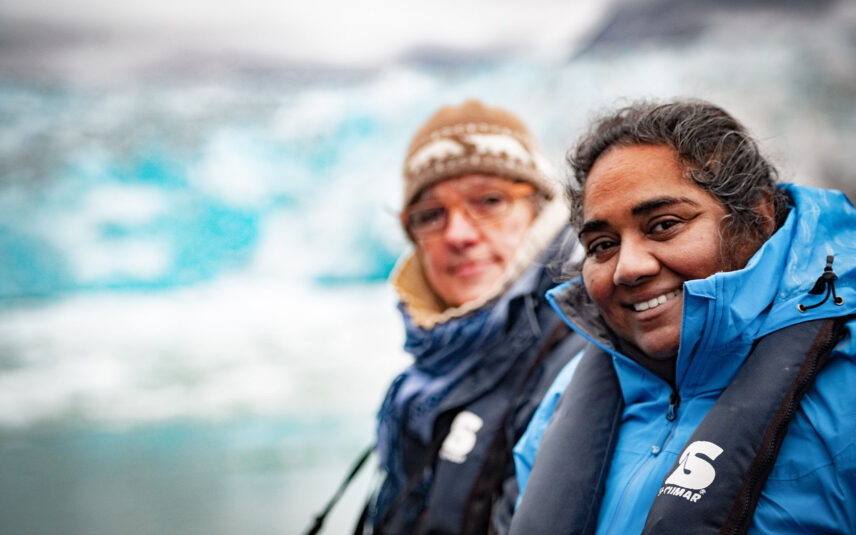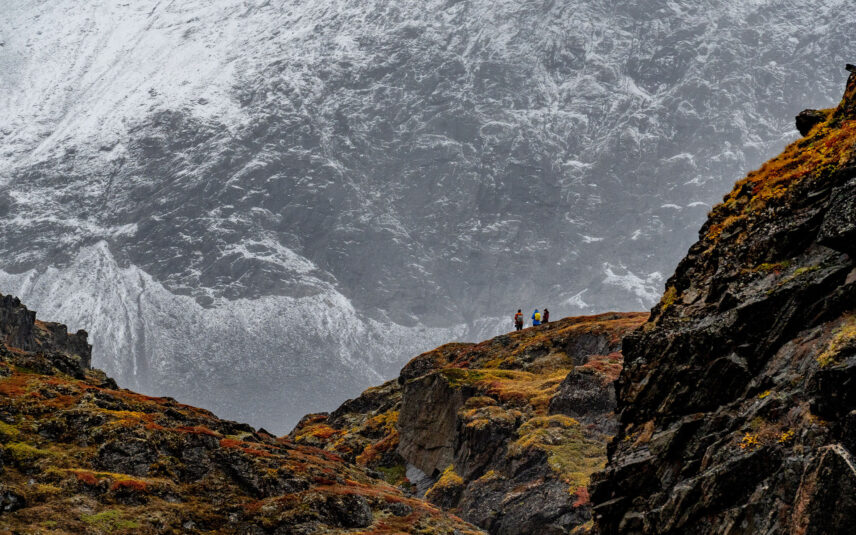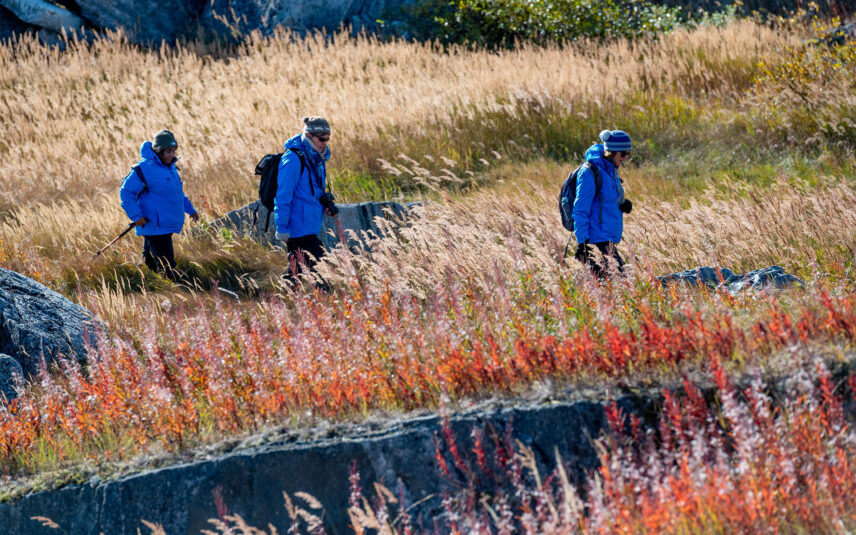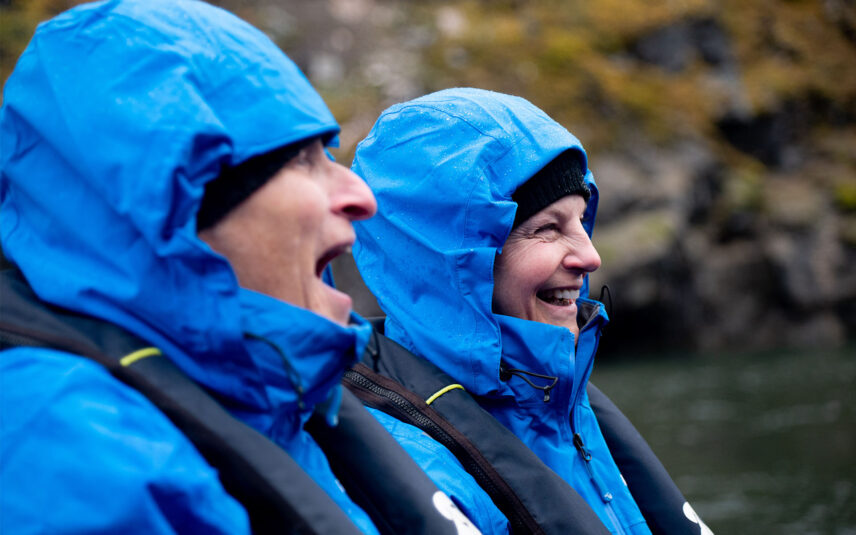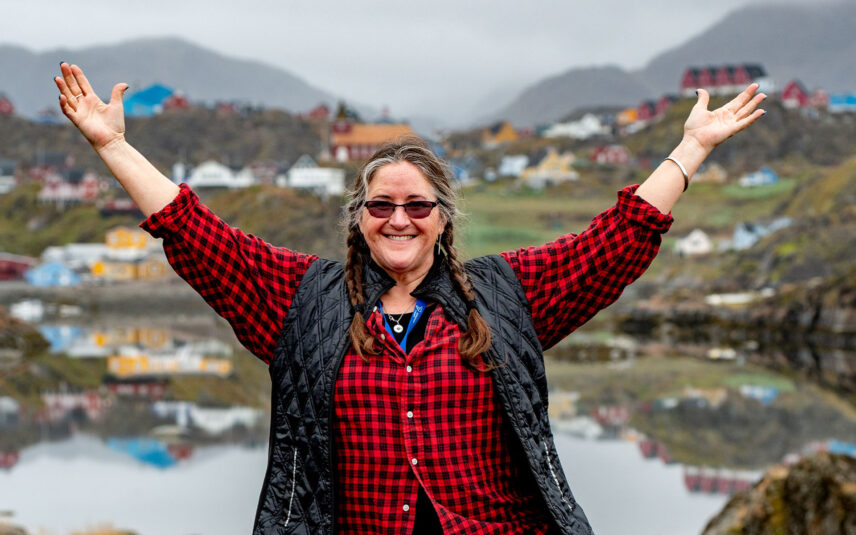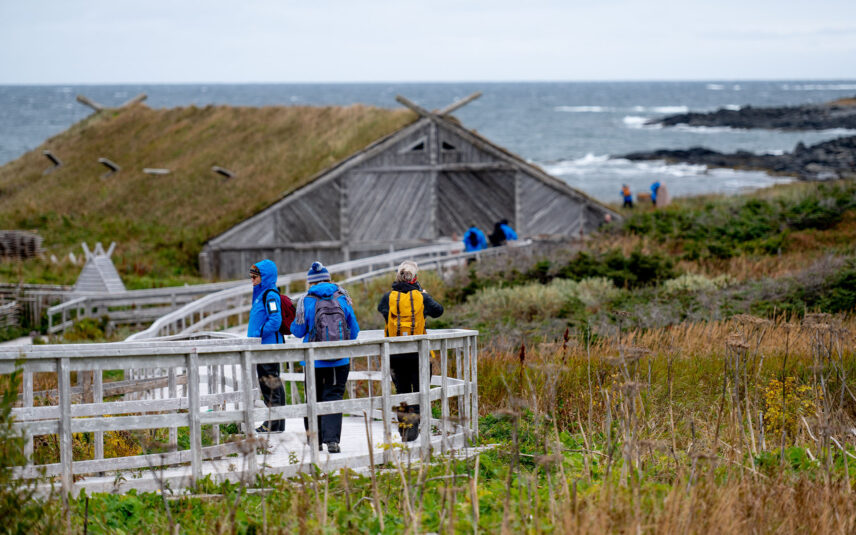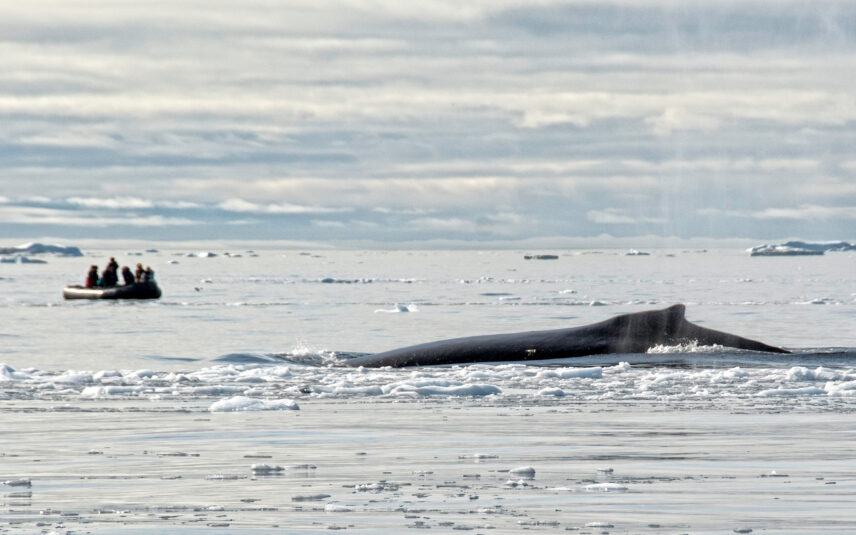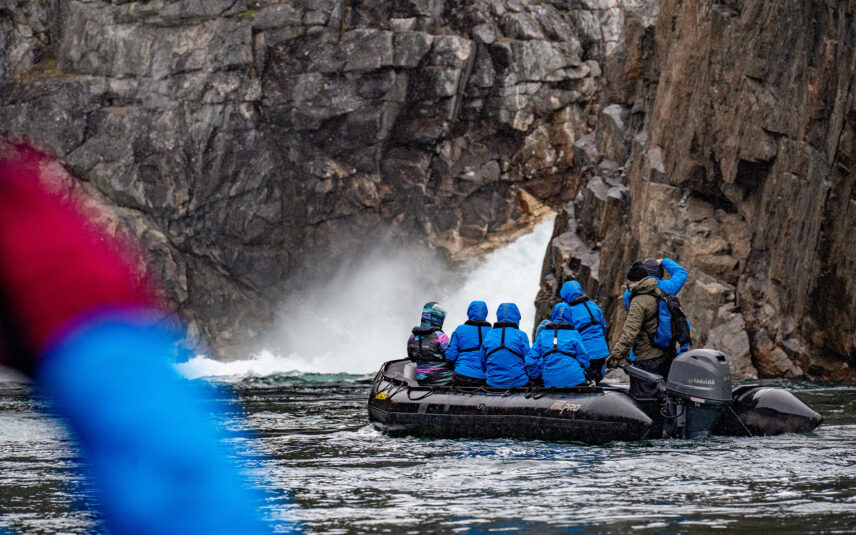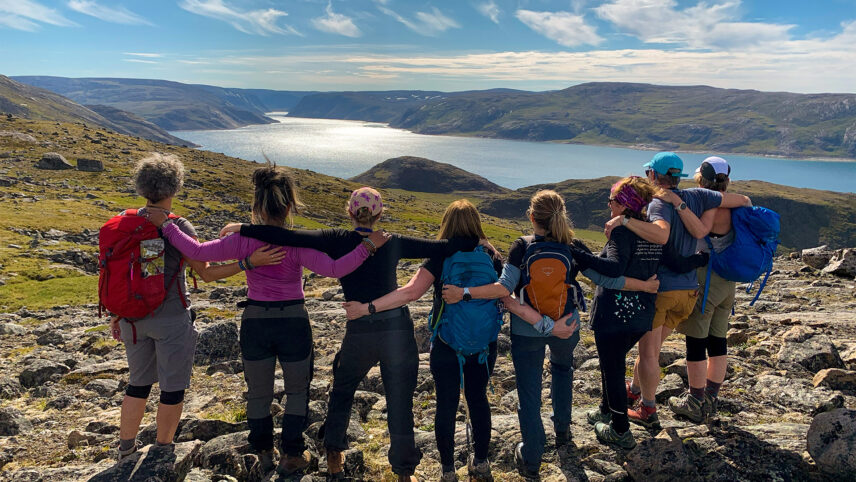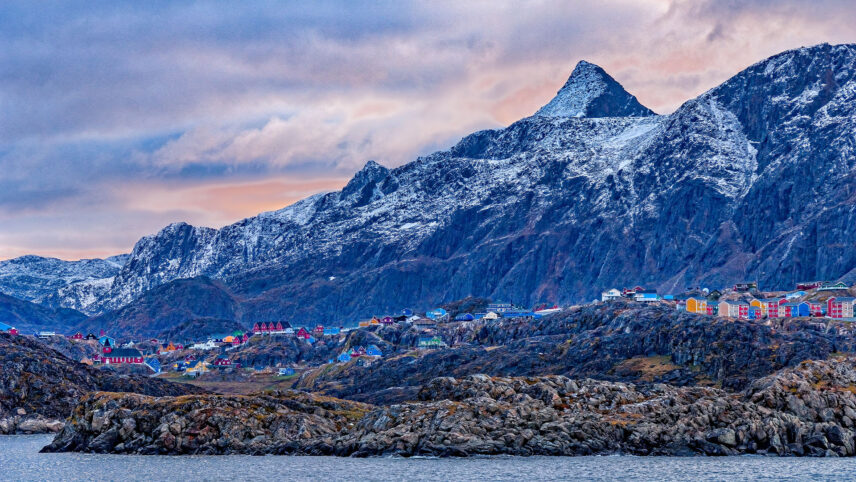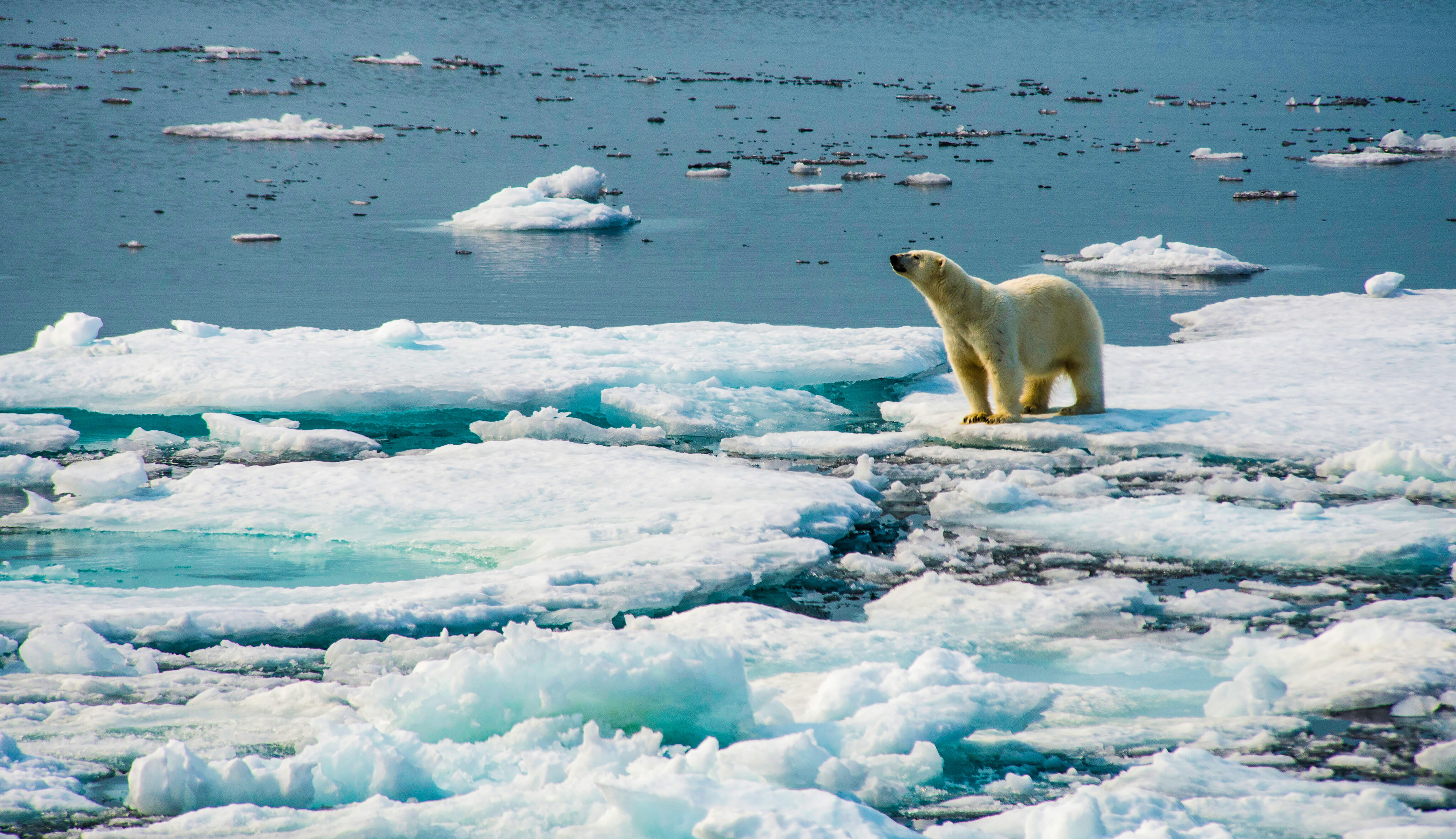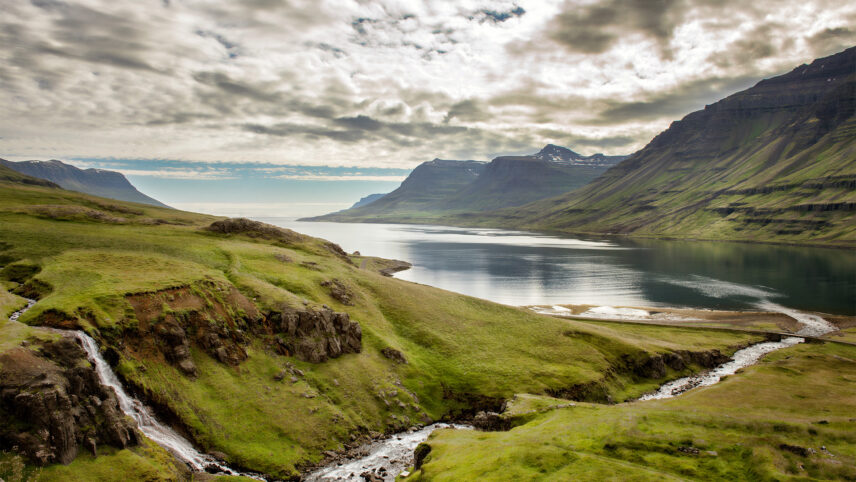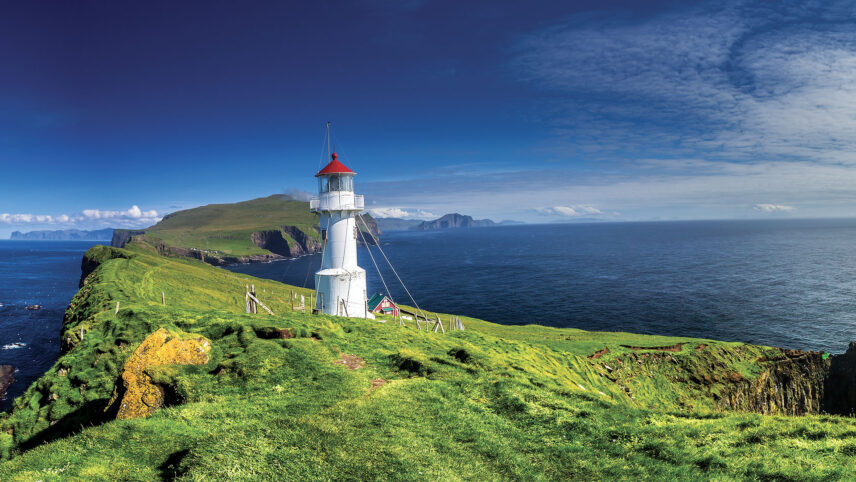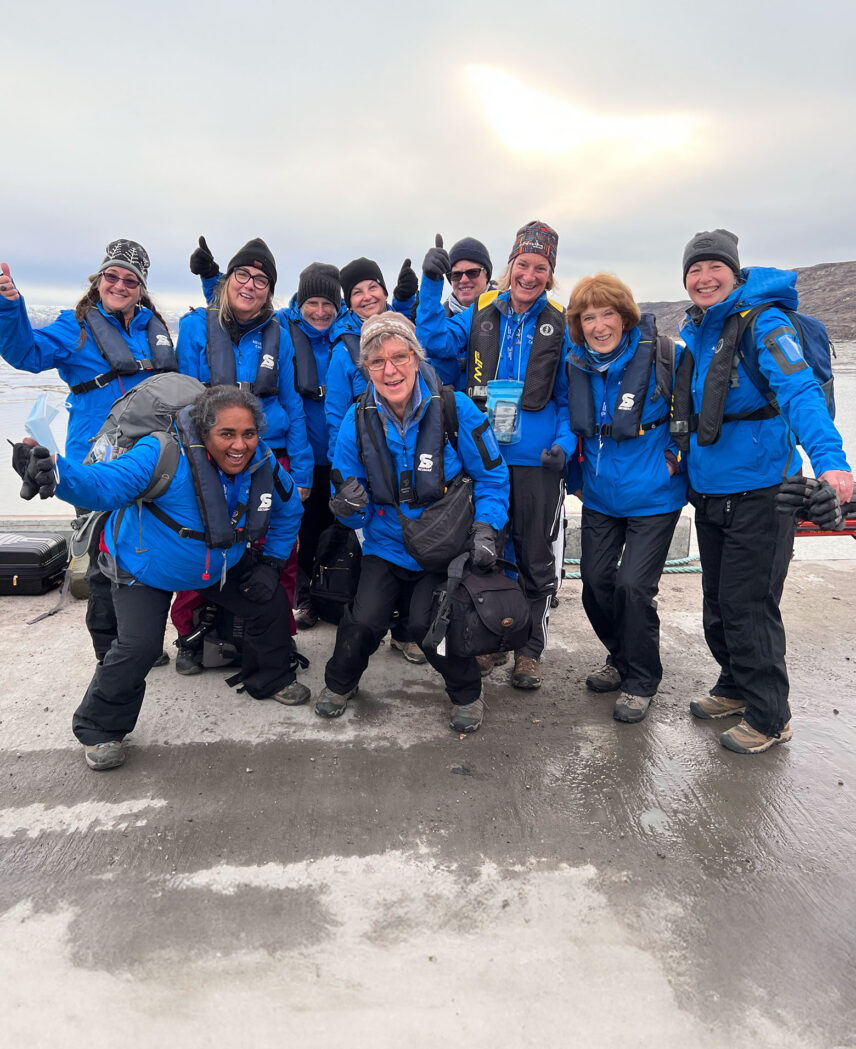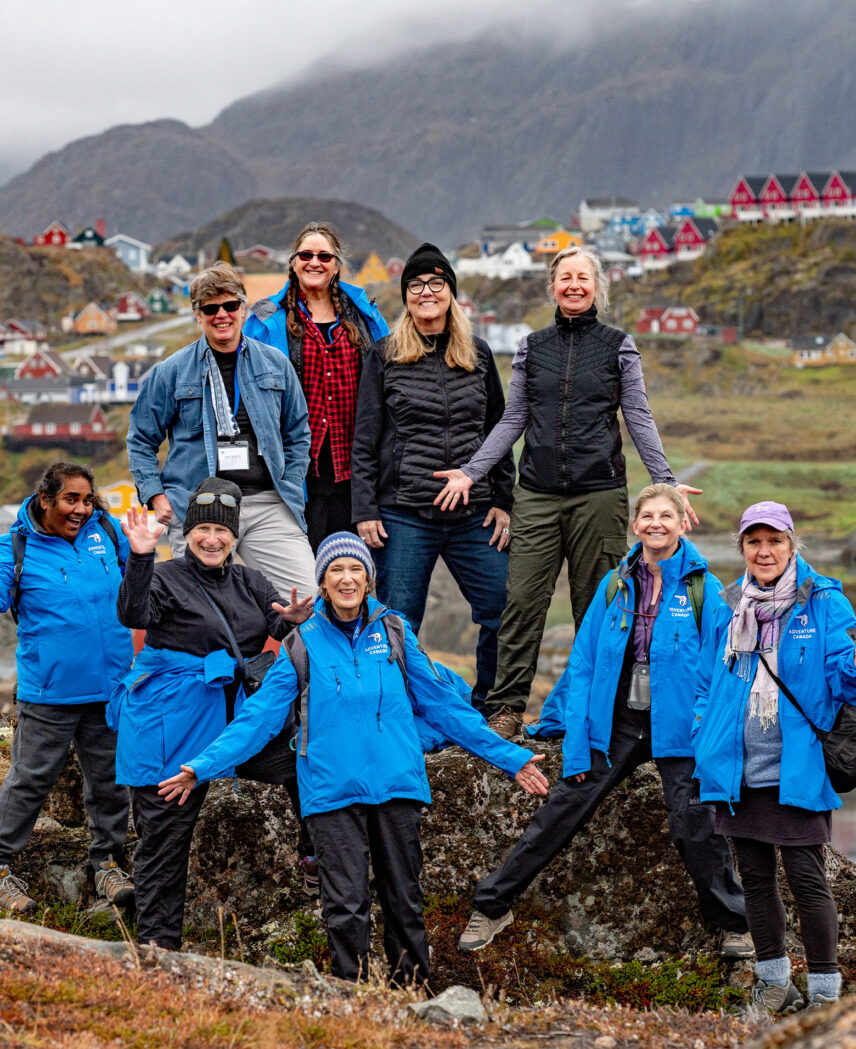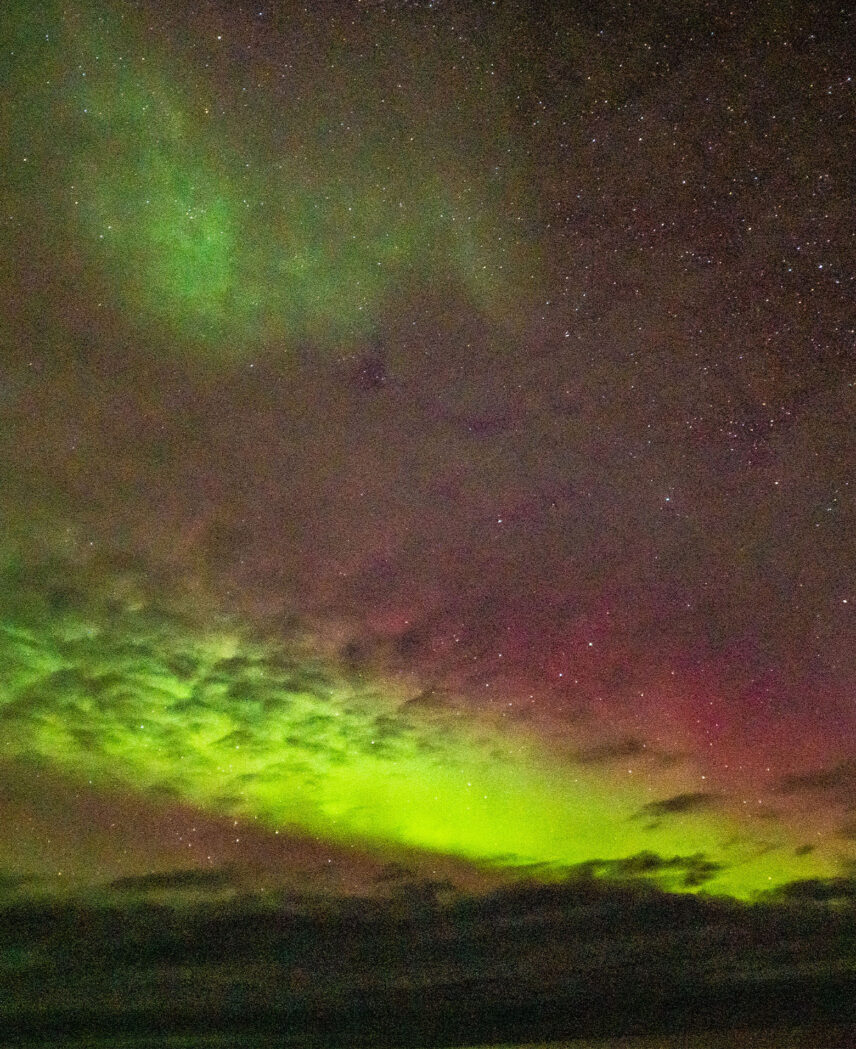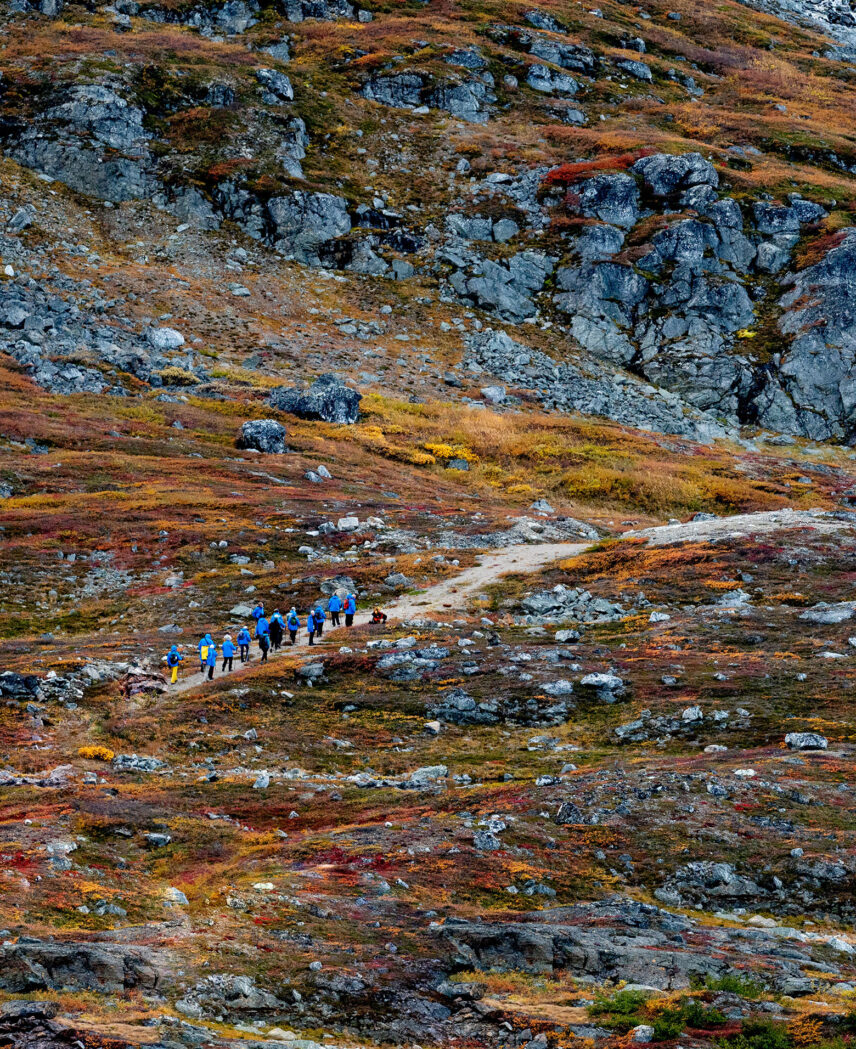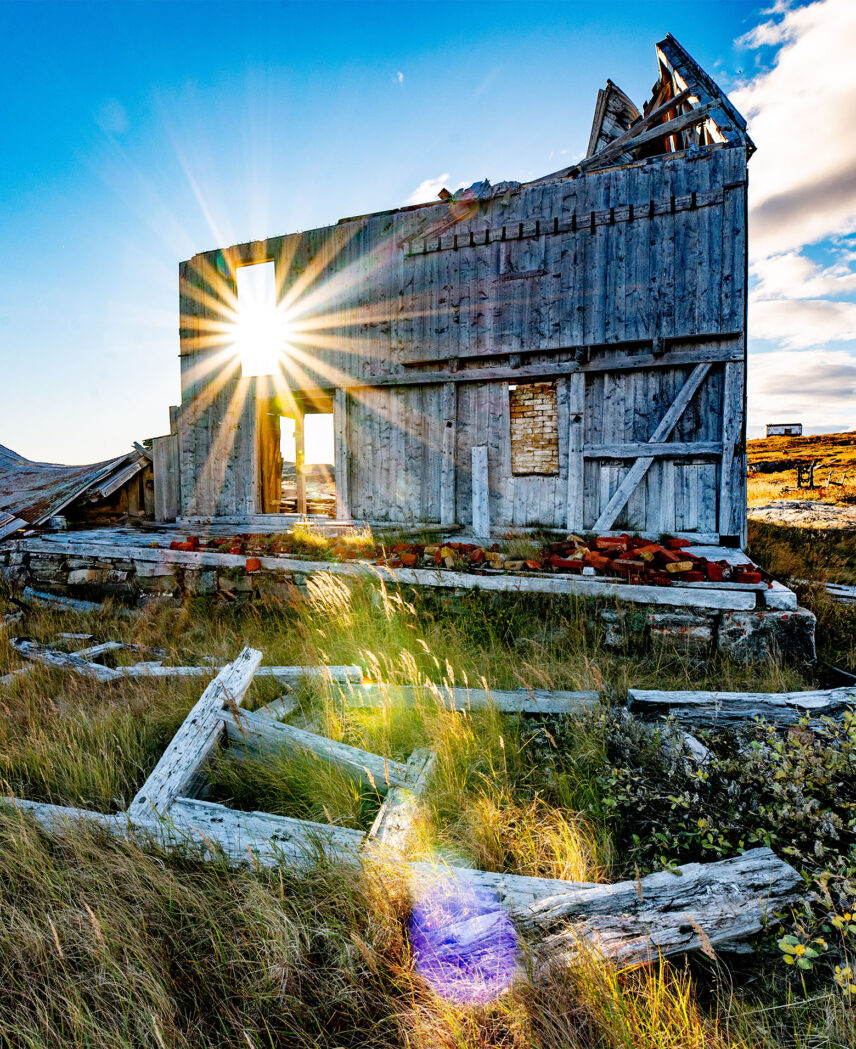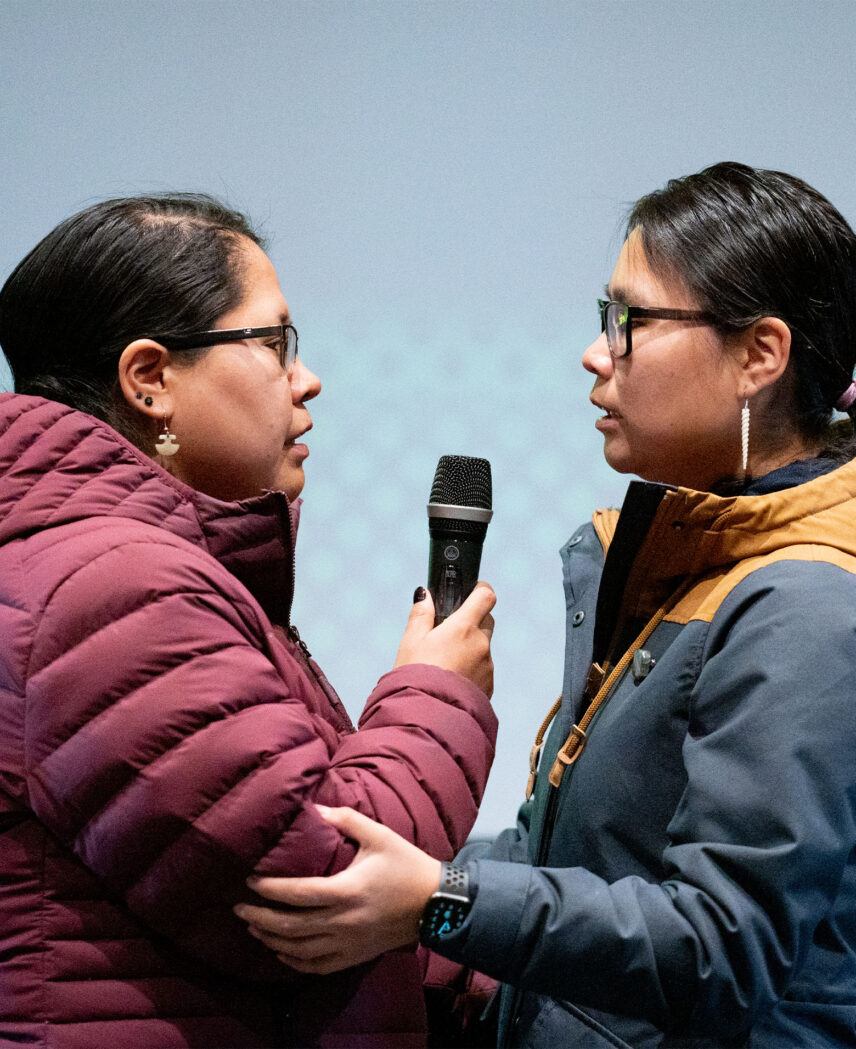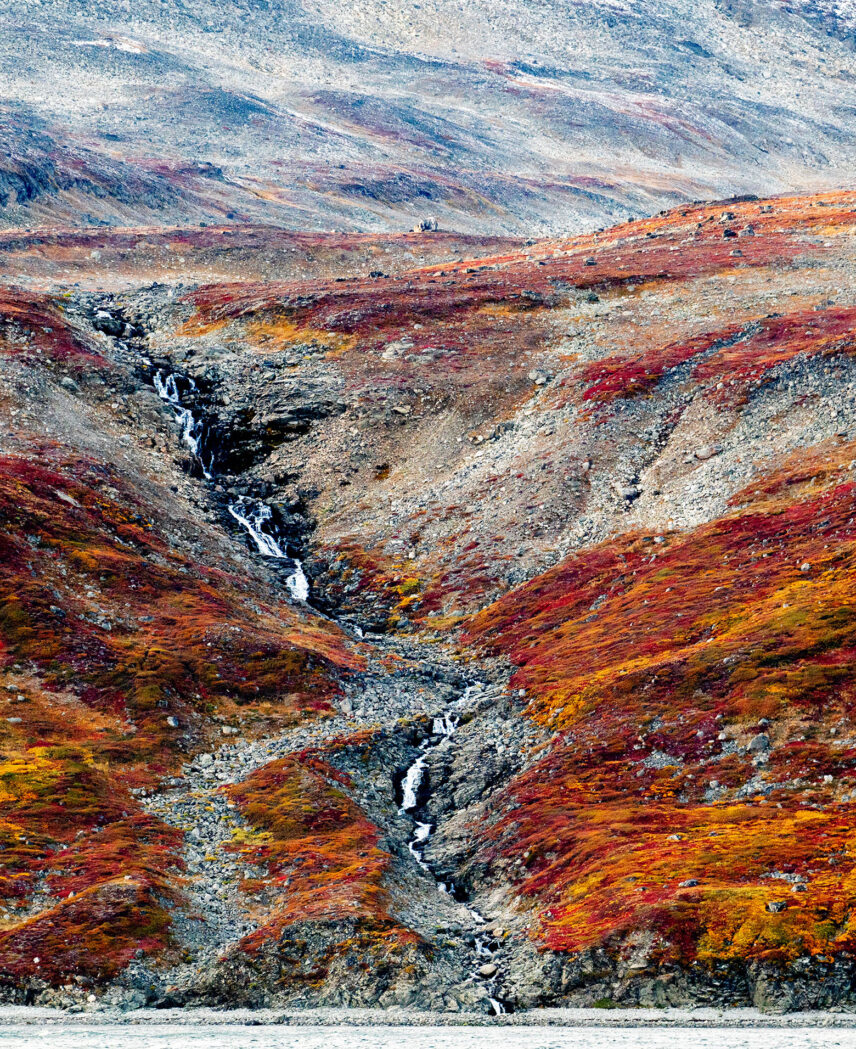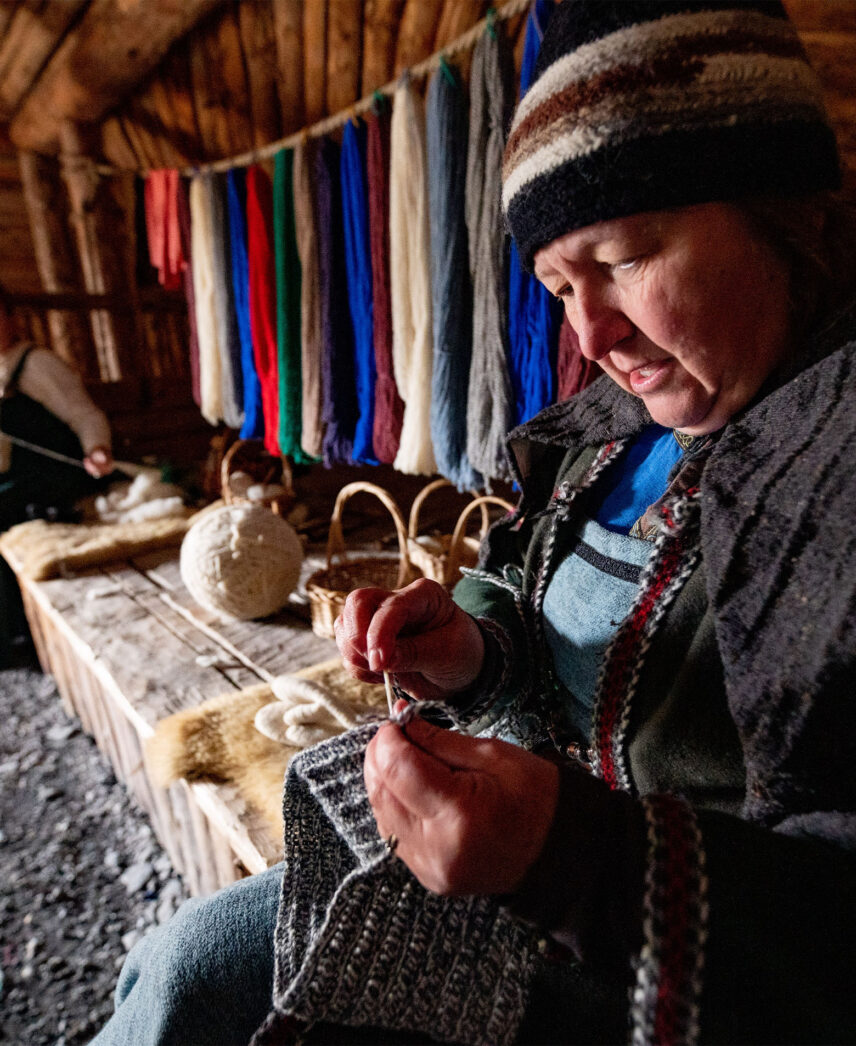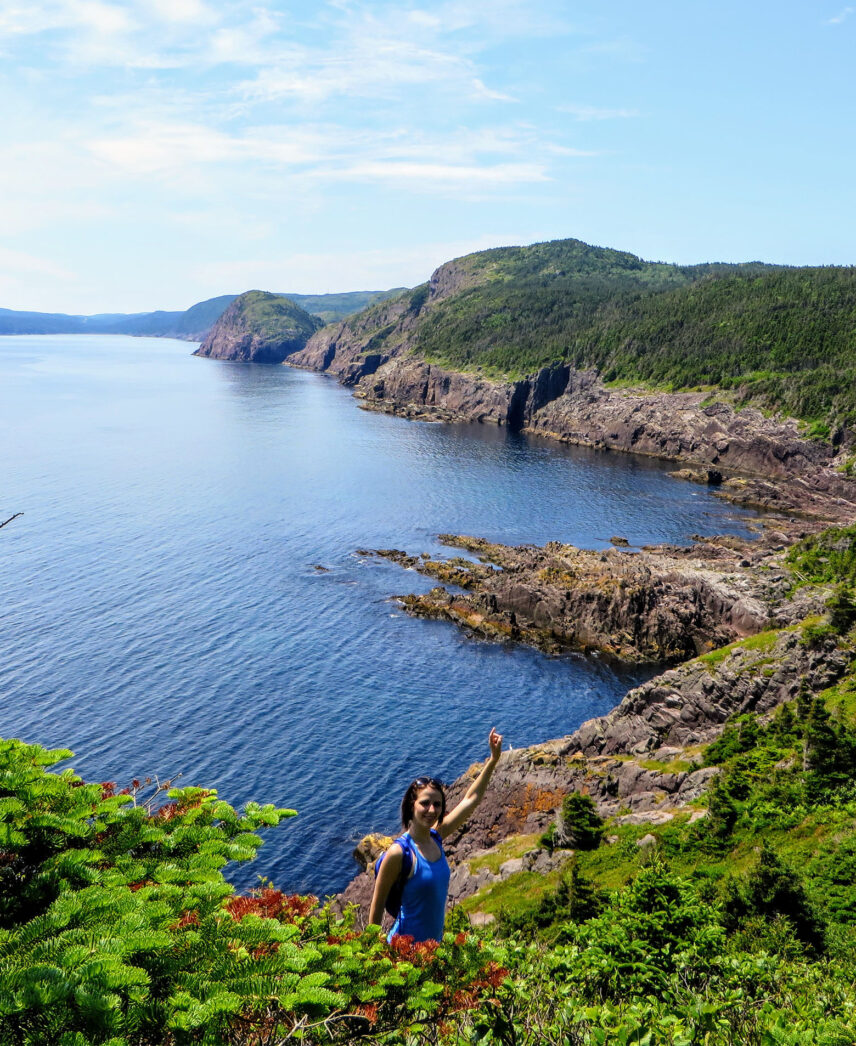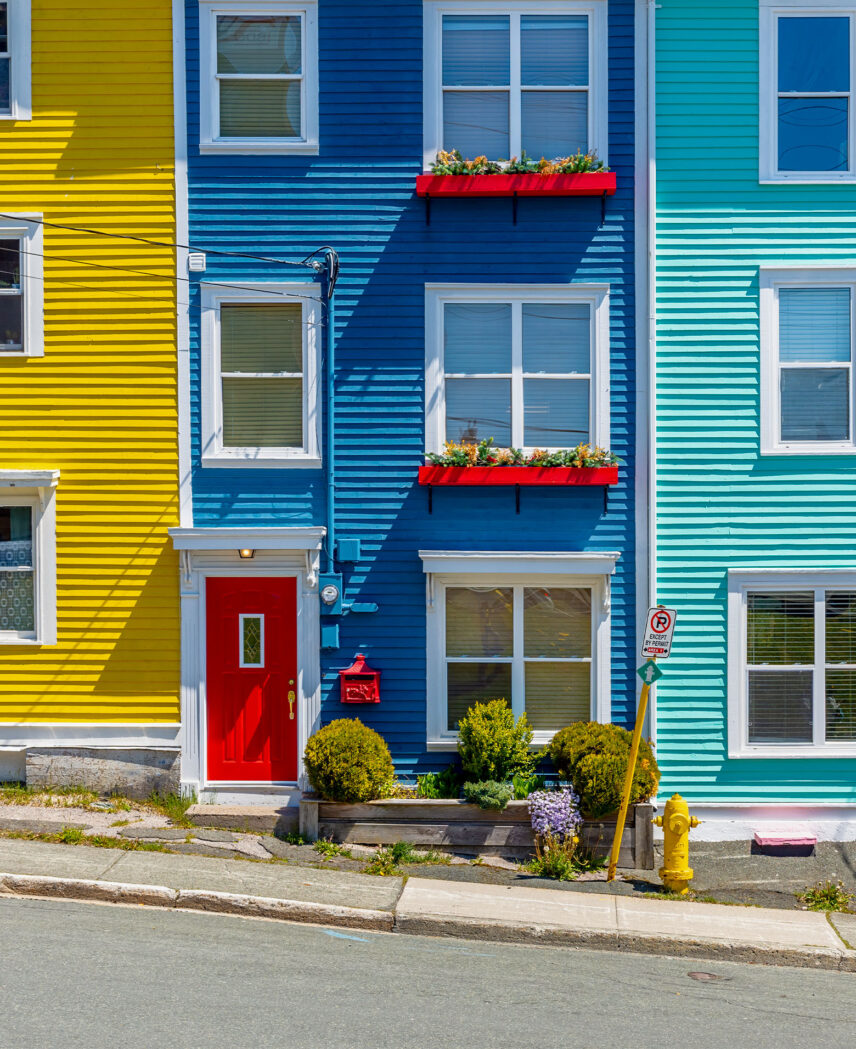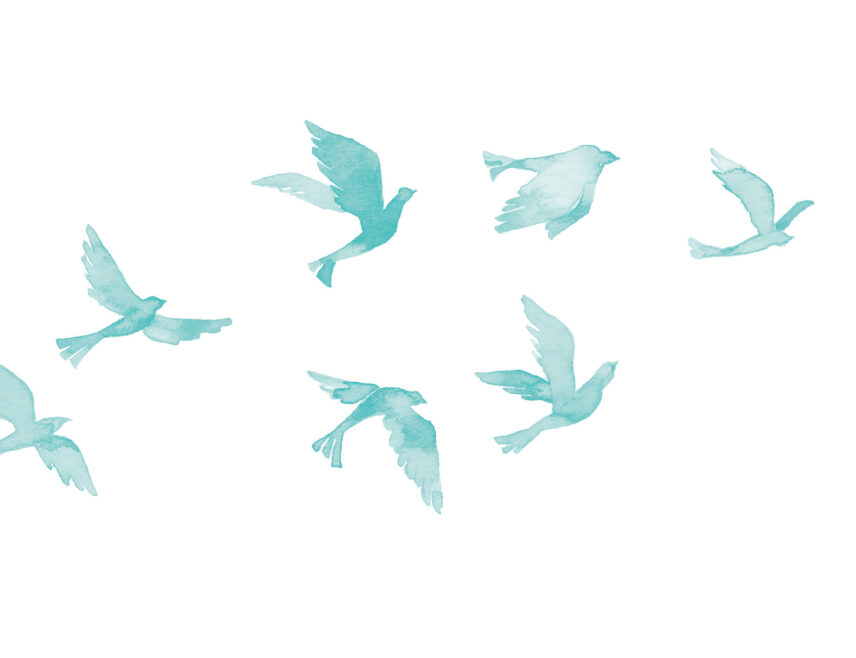
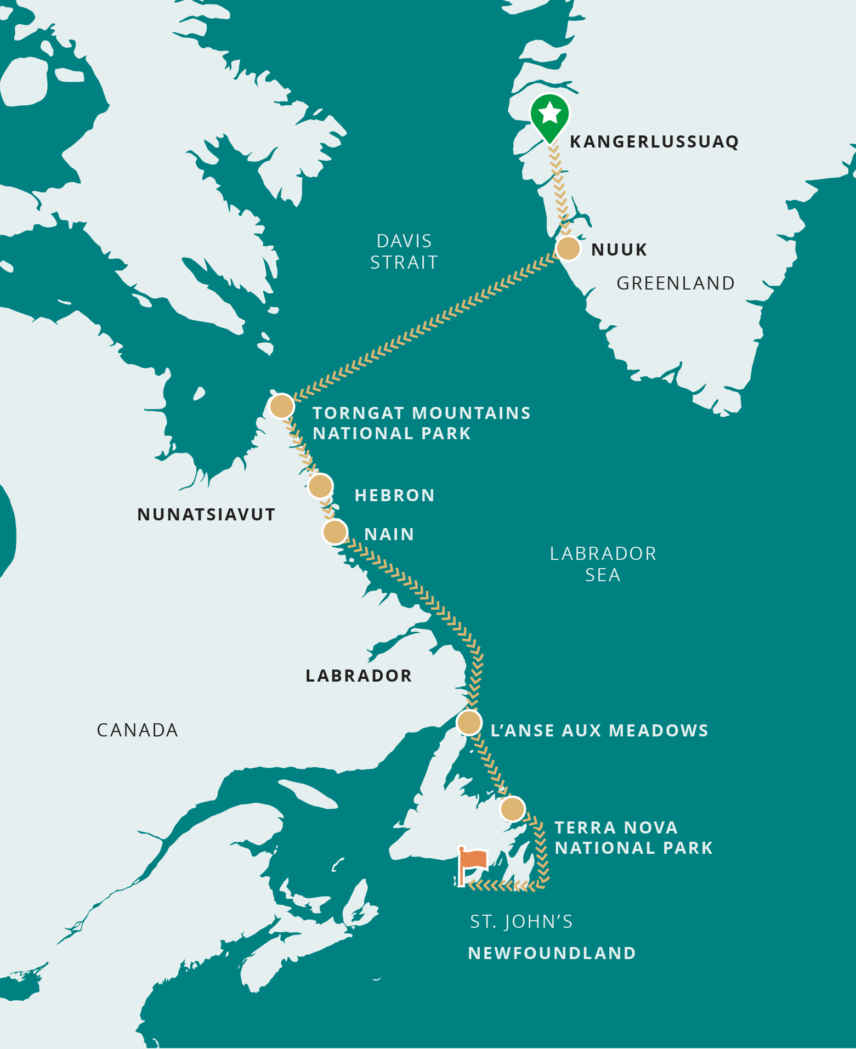
Trip Overview
Departures
Trip Dates + Prices
Duration
15 Days
Activities
Boating/Rafting
Cultural
Hiking
Small-Ship Expedition
Wildlife Viewing
Physical Rating
Easy
Be the First to Know
Interested in this trip? Get on the list for exclusive information and updates.


Photo Credit: Stephen Gorman
Dream Out Loud
If your dream checklist includes polar bears, icebergs, learning the Greenland Polka, extreme birding, tromping around national parks, Norse and Inuit history—this navigation delivers. Cross the Arctic Circle and delve into the Viking vibe at the UNESCO World Heritage Site of L’Anse aux Meadows too.
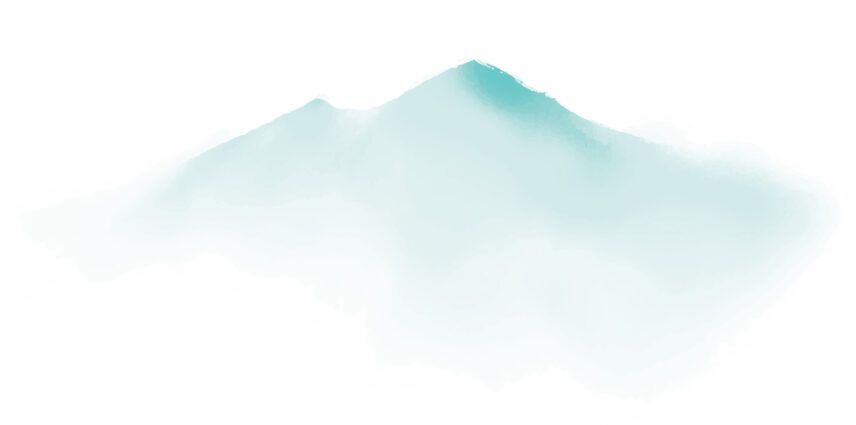
Channel Your Inner Viking
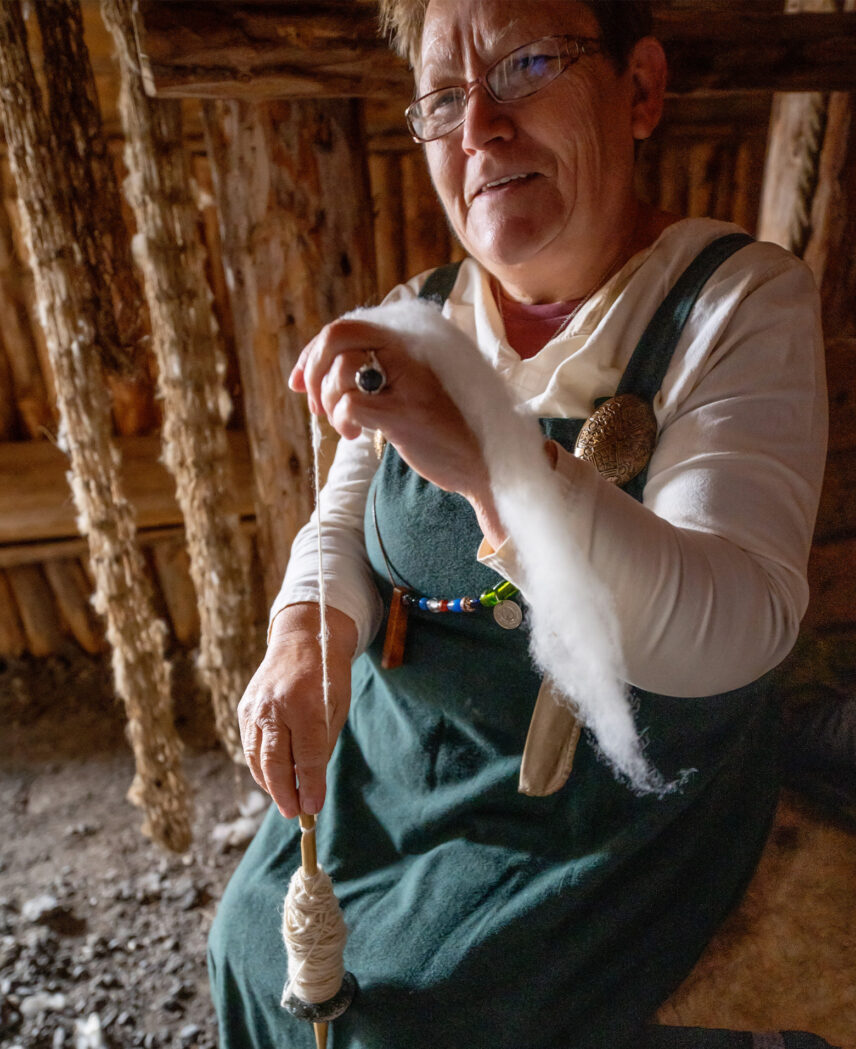
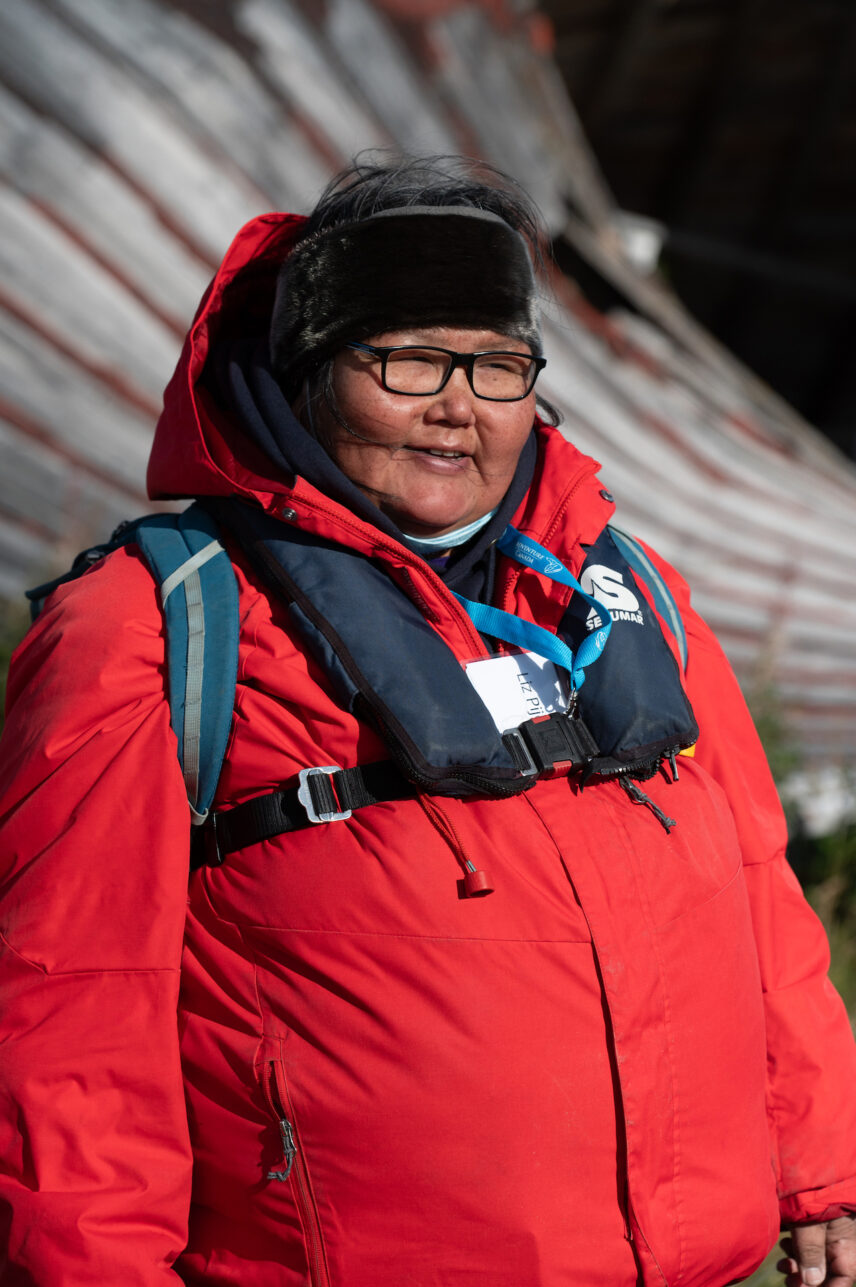
Immerse Yourself in Nature and Heritage
Nature and Inuit heritage are celebrated in this passage through the unspoiled fjords and remote inlets of Greenland to the skinny Narrows of St. John’s, Newfoundland. We hike Torngat Mountains National Park and explore historic sites like the abandoned Moravian Mission in Hebron. We also visit communities in Greenland, northern Labrador and eastern Newfoundland and experience the true heartbeat of the land: the people who live there.
The Greenland-Wild Labrador was a fabulous trip—it was well organized, well led and offered a variety of activities—from presentations on every aspect of the trip to zodiac visits and wonderful hiking outings for the other half of the day. I was glad to have the Wild Women group as a base family to share meals and experiences with. The crew—both expedition and international—were welcoming, friendly and very helpful. Thank you, WWE, for facilitating my participation.”
Jane M.
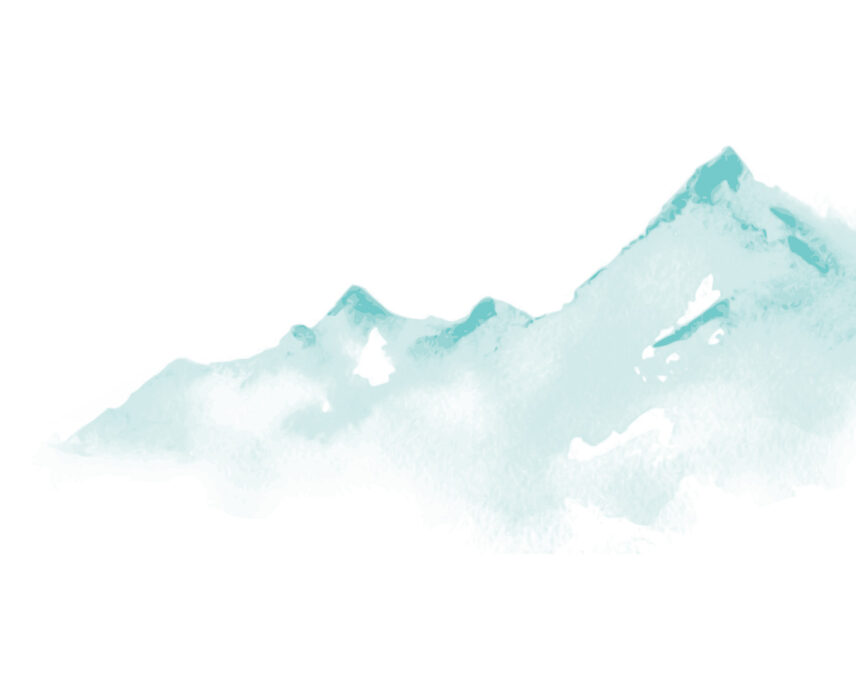
Itinerary
-
Day 1
Kangerlussuaq, Greenland
Break the Ice
We begin our adventure by boarding a northbound charter flight from Toronto, Ontario to Kangerlussuaq.
Kangerlussuaq is a former U.S. Air Force base and Greenland’s primary flight hub. Cue up the Top Gun soundtrack, right? Your first lesson begins with the pronunciation of Kangerlussuaq, which is kaˌŋɜˈɬːusːuɑq in Greenlandic. West Greenlandic is the official dialect that all children learn in addition to Danish and English. Greenlandic words can be extremely long, but they often convey an entire sentence. For starters, try “aluu” (hello) or “baaj” (goodbye).
After a few stumbly aluus and a baaj we transfer by Zodiac to the Ocean Endeavour. With 104 miles (168 km) of staggering scenery to stare at, we follow the longest fjord in the world, Kangerlussuaq Fjord (Søndre Strømfjord) and cross the imaginary but remarkable Arctic Circle as we head southbound.
Included Meals
All on-board meals
Accommodations
Your cabin on the Ocean Endeavour
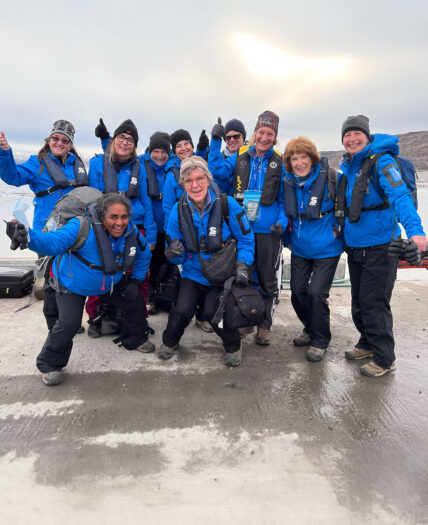
-
Day 2
Kangerlussuatsiaq Fjord
A Sensory Massage
Greenland’s west coast is simply stunning—it’s one big panoramic postcard of superlatives. From daunting mountains to the tiniest sprays of tundra flowers, our stop in this area is one that has everyone stamping their feet in a tantrum when it’s time to leave. The waters are relatively warm here due to the West Greenland Current and the sub-Arctic location (but not as warm as the on-board hot tub).
Hikers, birders, poets, photographers, daydreamers and self-proclaimed philosophers all fall under the dramatic coastal spell. Later, we can reflect on the chills and thrills of the day’s total sensory massage in the sauna or hot tub.
Included Meals
All on-board meals
Accommodations
Your cabin on the Ocean Endeavour
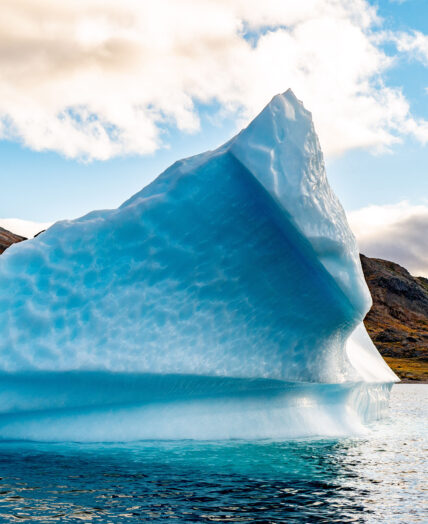
-
Day 3
Nuuk
Pop-up Polkas and Mummies
Nuuk, the brightly-painted capital of Greenland, is a collision of nature, modernity and tradition. The Old Harbor is a reflection of Danish colonial days, while contemporary Nuuk is known for its cool vibe, minimalist gallery cafes, upmarket Danish steakhouses, boutique shops and rowdy pubs. We may be spontaneously pulled in to join a Greenland Polka!
The University of Greenland is Greenland’s only university—and it’s located in Nuuk. Most courses are taught in Danish with a few offered in Greenlandic.
The Greenland National Museum is one of Nuuk’s treasures. Don’t miss the opportunity to see the Inuit skin boats and 15th-century Qilakitsoq mummies. Move over Tutankhamun! There’s a new mummy in town!
Included Meals
All on-board meals
Accommodations
Your cabin on the Ocean Endeavour
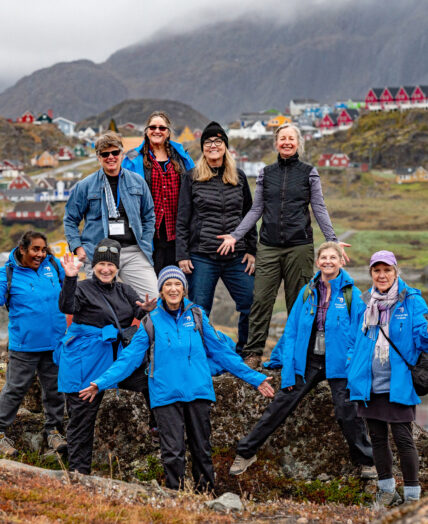
-
Day 4
Davis Strait
Unicorns of the Sea
The Davis Strait is the ocean expanse that links southeastern Baffin Island and southwestern Greenland. Narwhals, bowhead and pilot whales cruise through the strait, though sightings are dependent on zooplankton and schools of fish. Inuit fishermen have also relied on these shallow waters for Arctic char.
Baffin Bay’s estimated population of 50,000 narwhals accounts for 80 to 90% of the world’s population. The “unicorns of the sea” are playful year-round residents of Baffin Bay, feeding and mating in the winter.
This is an ideal time to kick back and scout the northern Atlantic for unicorns, minke, humpbacks, auks and other unexpected pop-up wildlife. Find a seat in a workshop, watch a documentary or take advantage of the ship’s amenities! There’s a gym, library or bar—as well as wandering Wild Women eager to keep you company if you want to chat, chill or sweat it out!
Included Meals
All on-board meals
Accommodations
Your cabin on the Ocean Endeavour
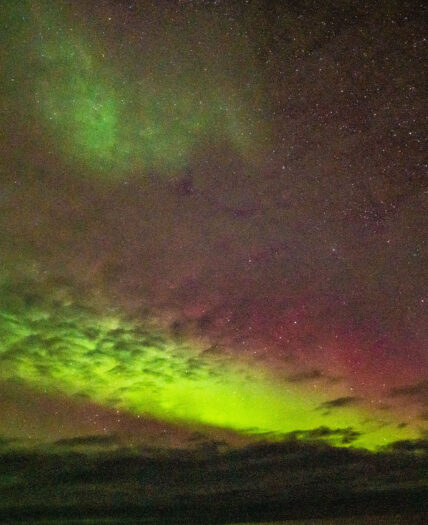
-
Days 5–7
Torngat Mountains National Park
The Peak Moment
East of the Rockies, Canada’s highest peaks are found in Torngat Mountains National Park, Labrador’s first park. The signature saw-tooth skyline is instantly captivating. Blue-jean waters snake through glacier-scraped fjords that open up to the marine highway where icebergs silently glide by like ships.
There are 6,027 square miles (9,700 km) to hike in this sharp wedge-shaped park that sits on continental Canada’s most northerly tip between Northern Quebec and the Labrador Sea.
The subarctic mountains are the homeland of the Inuit of Nunatsiavut, polar bears, black bears and caribou. Birders should be on high alert for sightings of the red-throated loon, Harlequin duck, peregrine falcon, gyrfalcon, rock ptarmigan, glaucous gull, snow bunting, Lapland longspur and Northern wheatear! (Depending on the time of year and migratory patterns, of course!)
We hike and cruise in the Zodiacs, seeking out birds and bears. For the amateur historians on board, we visit archaeological sites as well.
Included Meals
All on-board meals
Accommodations
Your cabin on the Ocean Endeavour
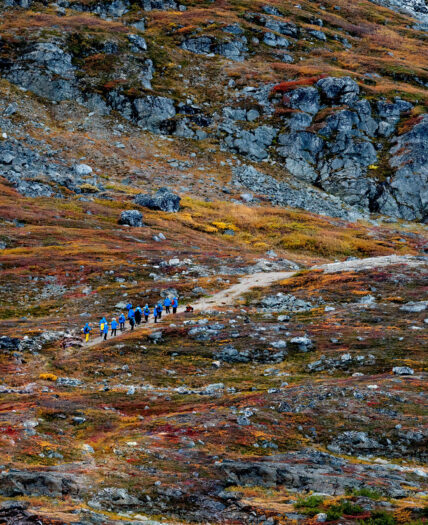
-
Day 8
Hebron
A New Mission
On the northeast coast of Labrador, this haunting site is the surviving remains of a Moravian Mission station. The Hebron Mission National Historic Site of Canada protects the interconnected buildings erected by the Church of the Brethren (the Moravians) in the 1830s. There’s a church, mission house and store designed in Germanic-style with steep, elongated rooflines and small dormer windows. It’s possible that these buildings were pre-fabricated in Germany (IKEA-style!). The church’s cupola is a link to the Moravians’ southeast European birthplace. The forge, carpenter’s shop and other structures are now left to the imagination.
The Moravian mission was abandoned in 1959, forcing the relocation of the Inuit who resided there. In 2005, Newfoundland and Labrador issued an apology to people affected by the relocations. Former Hebron residents and their kin continue to visit the site and to hunt and fish nearby.
Included Meals
All on-board meals
Accommodations
Your cabin on the Ocean Endeavour
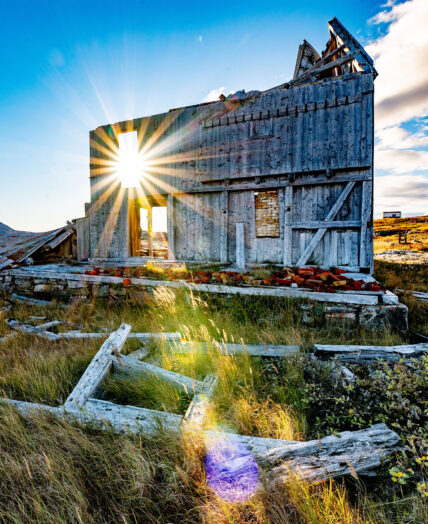
-
Day 9
Nain
The Stories and Songs of Labrador
Nain (population: 1,170) is the most northerly community in Labrador and the administrative capital for the Nunatsiavut Government. This gateway city to the national park is home to Torngat Fish Producers Cooperative (the local Arctic char industry), Voisey’s Bay Nickel Mine and the OKalaKatiget Society, a TV and radio agency that delivers weather updates, vessel reports, children’s songs and an Inuktitut language program featuring language lessons and recipes.
The recently built Illusuak Cultural Centre was designed by world-renowned architect Todd Saunders (the mastermind behind Newfoundland’s drop-dead gorgeous Fogo Island Inn). Here, we step inside an igloo and take another step deep into Inuit culture through stories and songs. We also visit the Moravian Church and learn more about the mission efforts of the Moravians.
Expect the warm embrace of the community, an introduction to the art and carved works of Labrador Inuit and samples of local food and music.
Included Meals
All on-board meals
Accommodations
Your cabin on the Ocean Endeavour
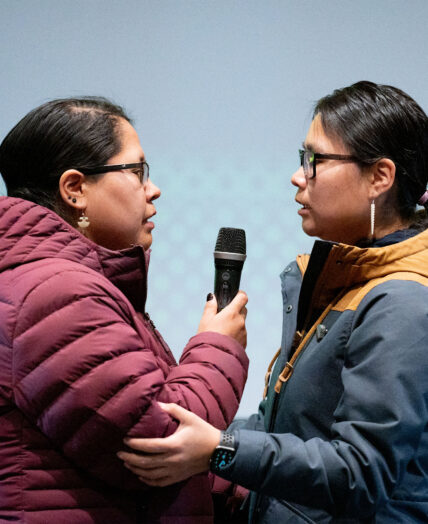
-
Days 10–12
The Labrador Coast
An Open Air Gallery
Labrador’s coast is untamed, storm-battered and pristine. It’s an open air gallery of ancient history and landscapes that beg to be painted. From the ship we see the transition in landscape from coastal barrens and high subarctic tundra to high boreal forest, mid-boreal forest and string bog (also known as strong mires). String bogs are defined by slightly elevated ridges and islands with woody plants that alternate with flat, wet sedge mat areas. They appear like oversized terrariums built with spongy moss, lichen, feathermoss, Labrador tea and dwarf black spruce.
Fun fact: the black spruce is the most abundant tree found in Labrador. It’s also featured on the Labrador flag!
Dotted with islands, this area is equal parts raw and fairytale. Landings will be based on the day’s weather conditions.
Included Meals
All on-board meals
Accommodations
Your cabin on the Ocean Endeavour
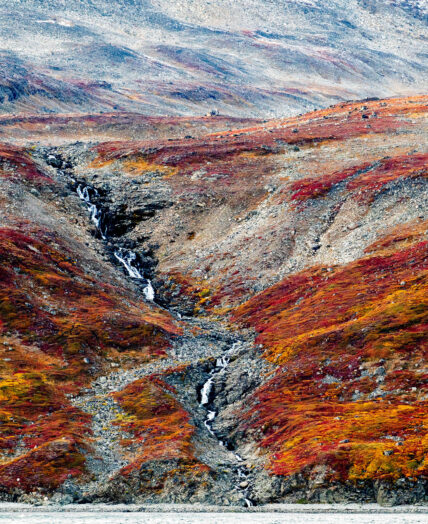
-
Day 13
L’Anse aux Meadows
A Nancy Drew Mystery
L’Anse aux Meadows is the only authenticated Norse settlement in North America and is a celebrated UNESCO World Heritage Site and National Historic site. The archaeological remains of the Norse encampment are over 1,000 years old, making it the oldest known European encampment in North America. It wasn’t until the 1960s that legit Viking remains were confirmed by a small bronze cloak pin. Nancy Drew would have had a heyday pulling at the threads of this mystery!
Full-scale replicas of the traditional Norse sod buildings will make us grateful for architecture’s evolution to energy efficient windows and doors. However, it’s awesome to play make-believe and conjure up the sagas of the Viking voyages. We can climb aboard the Snorri, a replica of the Viking ship that retraced Erickson’s course from Greenland to the Meadows. Thor, Loki and Eric the Red’s indomitable spirit loom here.
Included Meals
All on-board meals
Accommodations
Your cabin on the Ocean Endeavour
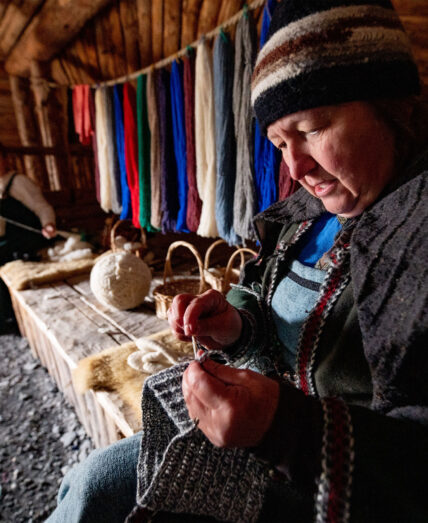
-
Day 14
Eastern Newfoundland
The Warmest Welcome
The east coast of Newfoundland is known for the dozens of vibrant villages that color its rugged shores. We’ll find harbor in one of these communities to truly experience the generosity and flavor of the most easterly province in Canada.
Photographers will exhaust their SD cards and batteries in an attempt to capture the ominous mood, jagged coastlines, secluded island communities and pulse that is exclusive to The Rock.
Expect a characteristically warm and jolly Newfoundland welcome upon our arrival—there is no other kind!
Included Meals
All on-board meals
Accommodations
Your cabin on the Ocean Endeavour
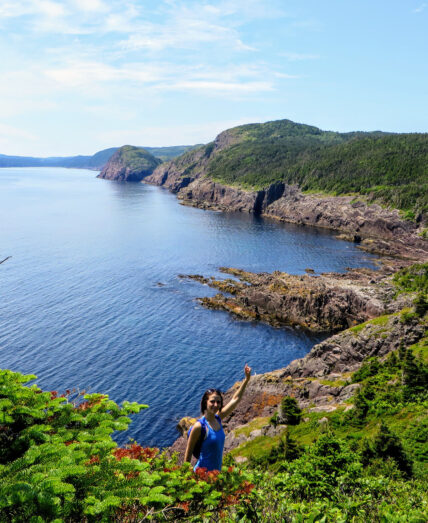
-
Day 15
St. John’s
Come from Away
Sailing into the port of St. John’s is a moment that requires contemplative pause. Palms get clammy at the thought of taking the captain’s wheel to navigate the ship into the famous Narrows.
Watch for locals and tourists alike, madly waving from the iconic Signal Hill just before we slip into the harbor of North America’s oldest city. The carefree and bold paint palette of the houses of Jellybean Row and The Battery are a pure marvel.
Here, we disembark the Ocean Endeavour with heavy but full hearts.
Be sure to squeeze in a Screech ceremony to make your landing in Newfoundland 100% official! It’s a Wild Women prerequisite! For everyone who is a “come-from-away” there’s a full, unspoken guarantee that you’ll be back.
Included Meals
All on-board meals
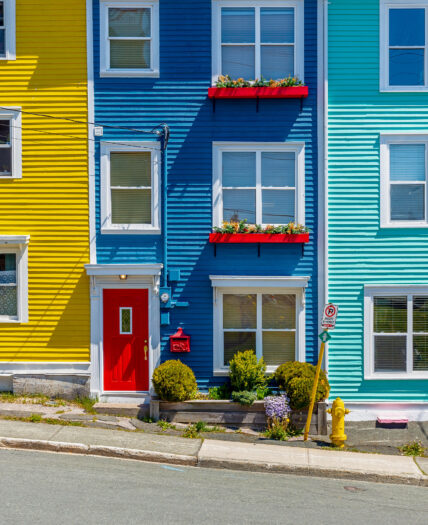
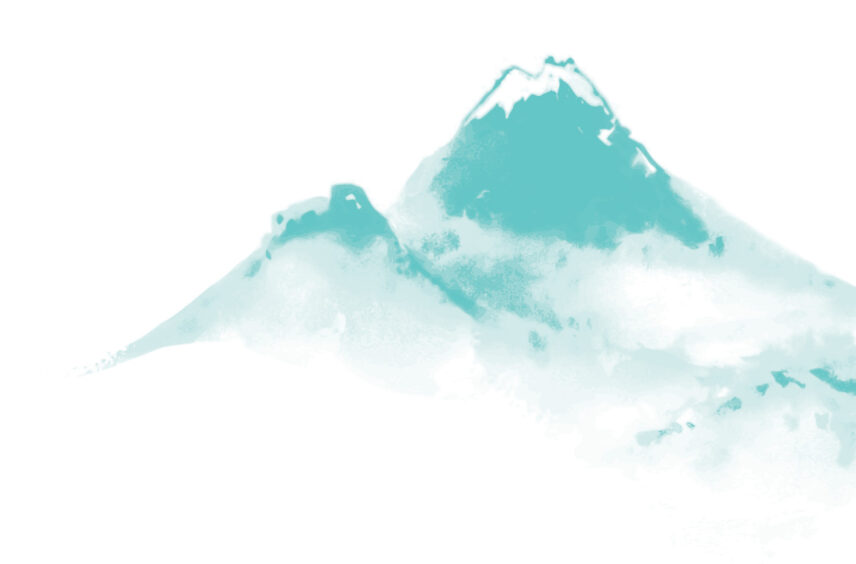
What’s Included
- Passage aboard the expedition ship Ocean Endeavour
- All onboard meals (even if you have seconds)
- Accommodation on the vessel (cabin categories 1–10 are subject to availability)
- A steely team of expert expedition staff
- Guided activities to stretch your legs and mind
- Sightseeing and community visits
- All Zodiac excursions
- Educational programming onboard, interactive workshops and evening entertainment
- A professional camera trial program for all skill levels
- Complimentary expedition jacket and rubber boots
- A handsome contribution to Adventure Canada’s Discovery Fund that supports local youth outreach, community support and habitat projects
- A Wild Women Expeditions Host
- Special access permits, entry and park fees
- Port fees, applicable taxes and the time of your life
What’s Excluded
- Northbound Charter Flight from Toronto, Ontario (YYZ) to Kangerlussuaq, Greenland (SFJ)
Additional fee for 2024: $1,375 USD
Additional fee for 2025: $1,450 USD - Departure flights should be booked out of St. John’s, Newfoundland (YYT) on your preferred departure date (additional fee)
- Gratuities
- Personal expenses
Please Note:
Upon booking, a charter flight arrangement to Kangerlussuaq will be made for you by Wild Women Expeditions and added to your trip’s final balance.
All applicable taxes are included in the trip price.
25% Off Early Booking Bonus already reflected in trip price.
Adventure Canada itineraries may be subject to change without notice due to weather, ice and sea conditions. Please review our Booking Terms.
Trip Add-Ons
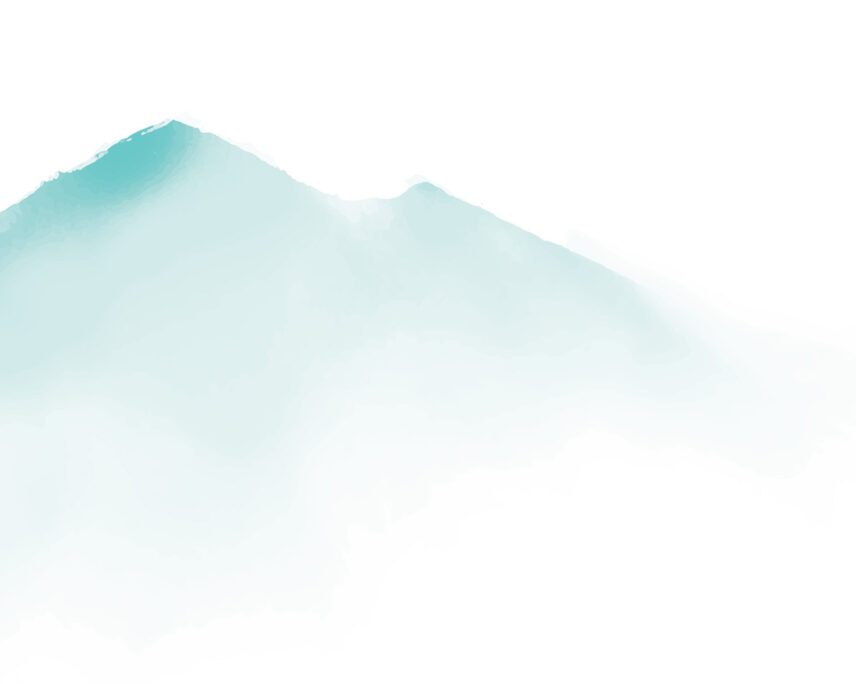
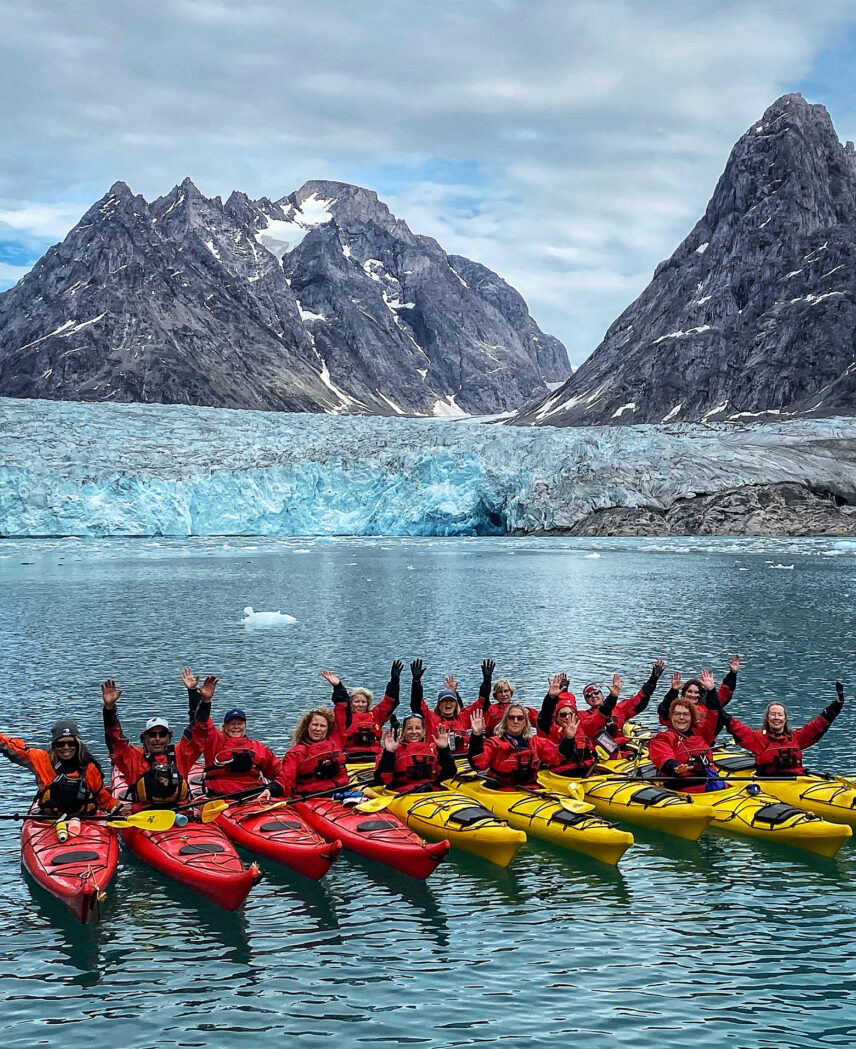
Photo Credit: Jenny Martindale
Kayaking
$800 USD Per Person
Join us for this rare opportunity to experience magical places by water. Our qajaq (Inuit for “kayak”) program will bring you through pristine waters, near marine life and along a historic coastline. Limited space is available per departure, and an application process is required for this activity. Some kayaking experience is required.
*Prices may vary based on departure dates.

Bicycle Rentals
Explore the stunning Arctic landscape on two wheels. A fleet of Kona mountain bikes is available for rent during set times throughout each expedition. Cycling excursions are only available in predetermined community visits, and passengers will be notified when they are available one to two days in advance of the excursion of the daily recap.
*Prices may vary based on departure dates.

The Ship & Cabins
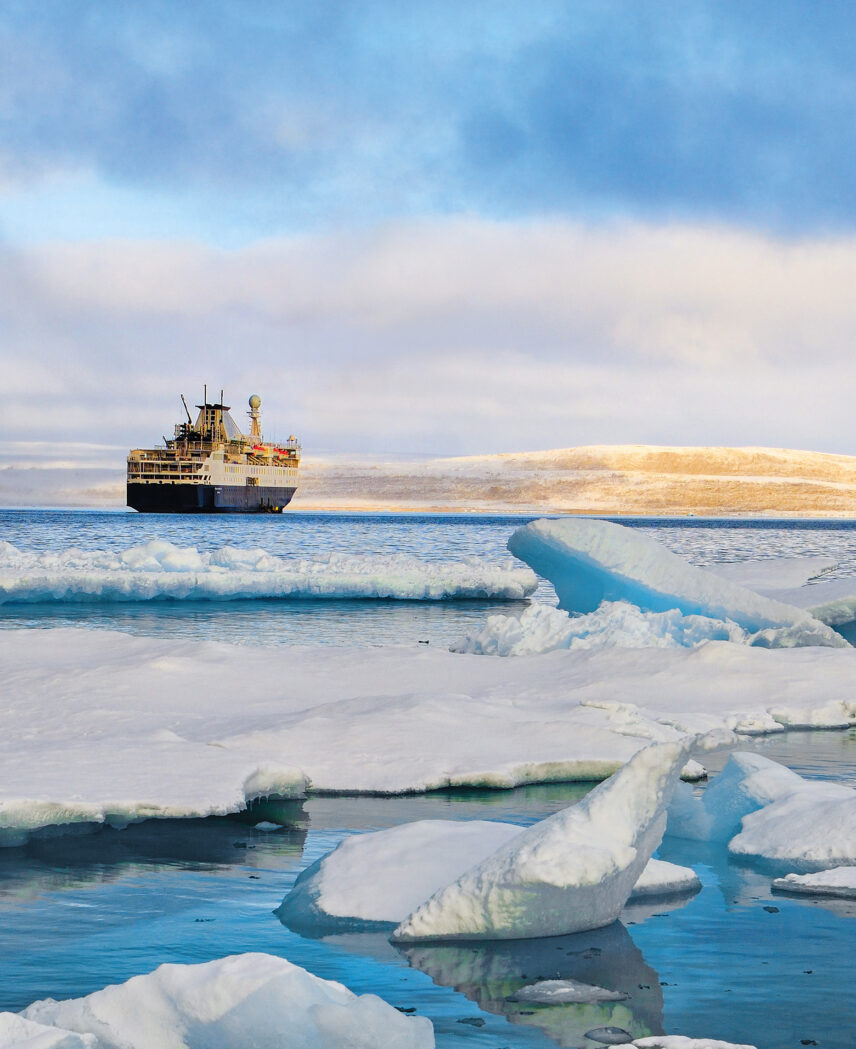
Photo: Bogner Bog
The Ocean Endeavour
The Ocean Endeavour is a 198-passenger ice-strengthened vessel with twenty Zodiacs, advanced navigation equipment and stabilizers. A doctor, paramedic and medical clinic offer complete peace of mind. The ship has several lounge areas, a library and multiple viewing decks, where you can relax by yourself or with your newfound crew.
Ship Specifications
Capacity: 198 passengers
Crew: 124
Registry: Bahamas
Ice Class: 1B
Length: 137 metres (450ft)
Breadth: 21 metres (19ft)
Draft: 5.8 metres (19ft)
Cruising Speed: 15 knots
Safety Features: 6 fully enclosed lifeboats and 8 life rafts. The ship has an ice-strengthened hull and the lifeboat and life raft capacity exceeds SOLAS requirements with at least 25% additional capacity above the number of people on board.
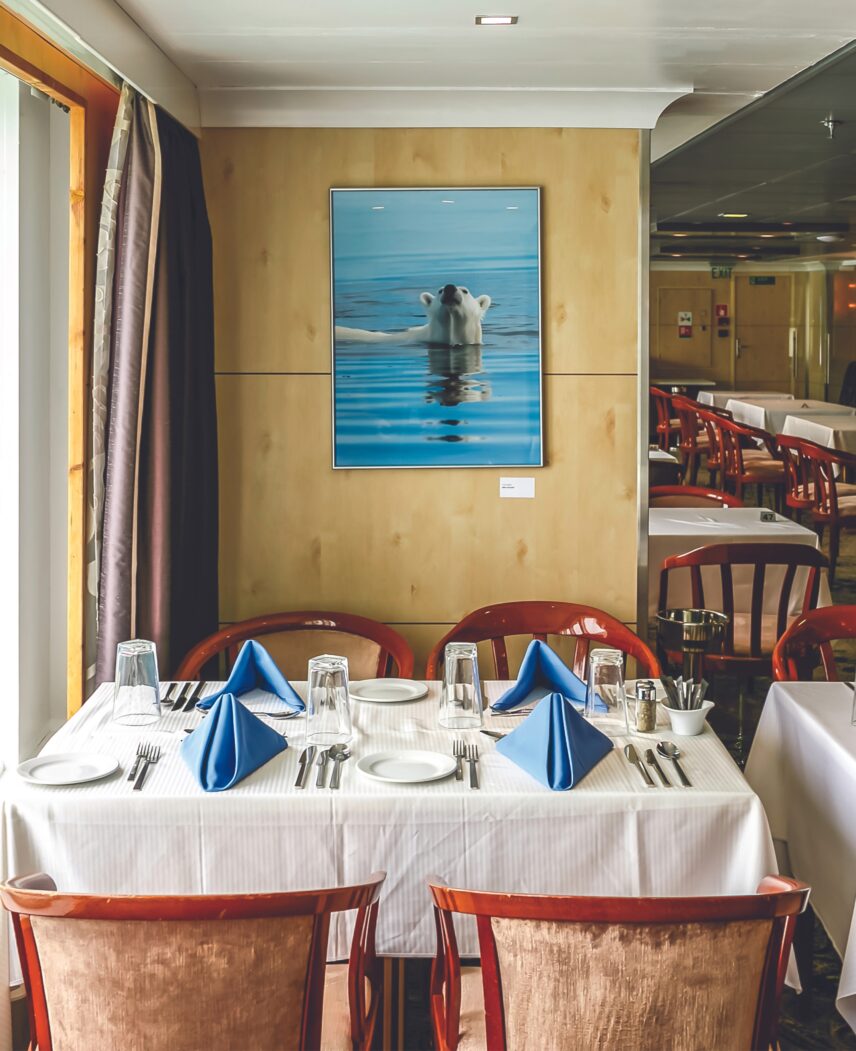
Food on Board
Enjoy open-seating meals in the roomy Polaris Restaurant, surrounded by ocean views. Adventure Canada staff mingle and share their expertise over meals. Breakfast and lunch include a wide variety of tasty and healthy choices. Globally inspired a la carte suppers offer options to suit every taste, including fish and vegetarian options. Desserts, made fresh daily, are a highlight! Food sensitivities, special diets, and personal choices can be accommodated with advance notice. Early-bird breakfast, afternoon tea, late-night snacks, and treats round out the offerings. And tea, coffee, and cookies are always available!
Life on Board
Life aboard Ocean Endeavour is as relaxed or as engaged as you want it to be. The onboard spa, library, hot tub, sauna, gift shop, multiple lounges, and viewing areas offer comfort and ease. Our programming is designed to enhance your understanding and appreciation of the regions we visit. Presentations, workshops, entertainment, and special events complete the excursions. From dances to polar plunges, from lounge concerts to theme parties, we love to have a great time together!
Choose Your Cabin
Below are details about the cabin options available. All cabins are shared with one of your new Wild Women friends. However, the earlier you book, the more likely you are to be paired with your travel companion.
Cabin Category 7
Select Twin
- Picture windows, unobstructed view
- Two lower berths
- Private bath
- Hair dryer, bathrobe, towels, body wash, and hair care products
- Intercom, telephone, and flat screen TV
- Approximately 190 square feet
Cabin Category 6
Comfort Twin
- Two porthole windows, unobstructed view
- Two lower berths
- Private bath
- Hair dryer, bathrobe, towels, body wash, and hair care products
- Intercom, telephone, and flat screen TV
- Approximately 175 square feet
Cabin Category 5
Main Twin
- Picture windows, unobstructed view
- Two lower berths
- Private bath
- Hair dryer, bathrobe, towels, body wash, and hair care products
- Intercom, telephone, and flat screen TV
- Approximately 115 square feet
Cabin Category 4
Exterior Twin
- Porthole window, unobstructed view
- Two lower berths
- Private bath
- Hair dryer, bathrobe, towels, body wash, and hair care products
- Intercom, telephone, and flat screen TV
- Approximately 100 square feet
Cabin Category 3
Interior Twin
- Interior cabin
- Two lower berths
- Private bath
- Hair dryer, bathrobe, towels, body wash, and hair care products
- Intercom, telephone, and flat screen TV
- Approximately 120 square feet
Cabin Category 2
Triple
- Interior cabin
- Three lower berths
- Two private baths
- Hair dryer, bathrobe, towels, body wash, and hair care products
- Intercom, telephone, and flat screen TV
- Approximately 200 square feet
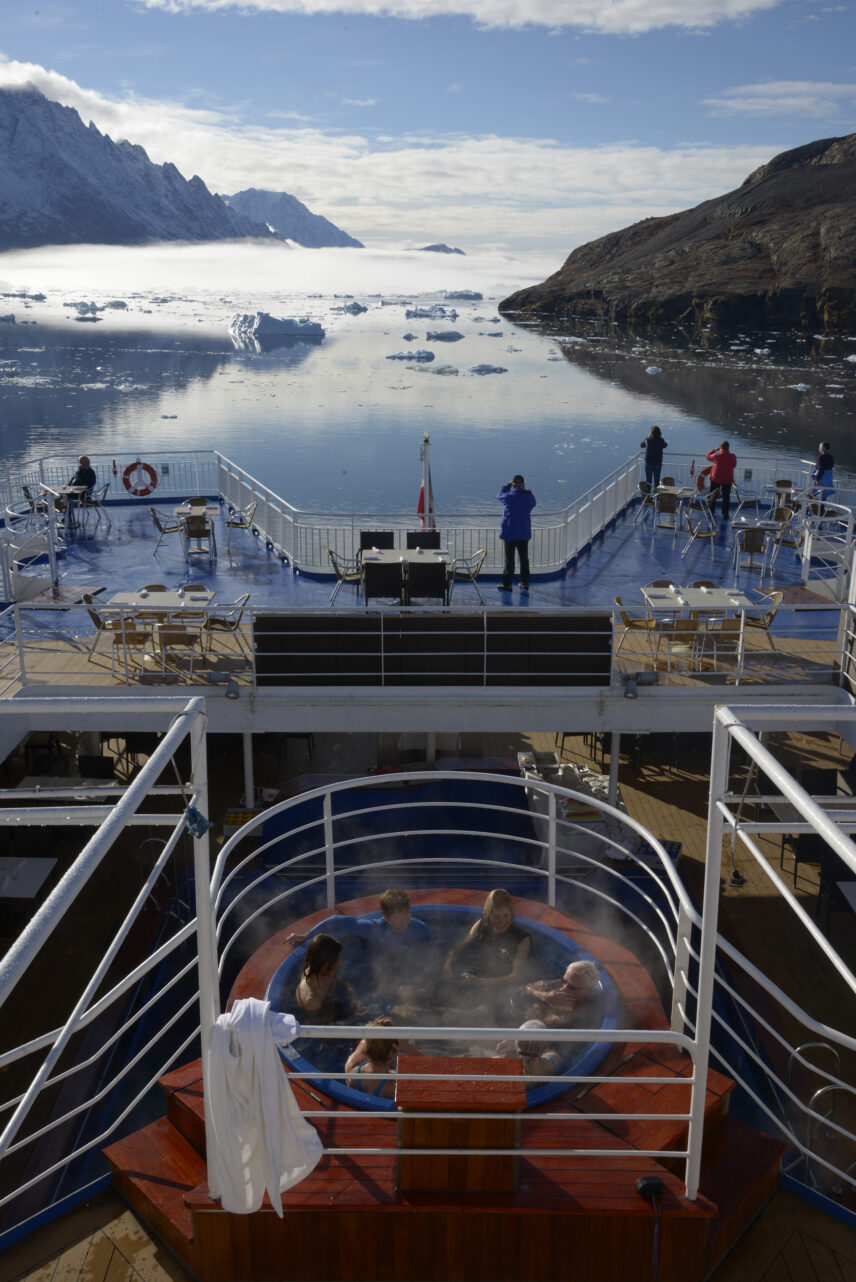
Hot Tub
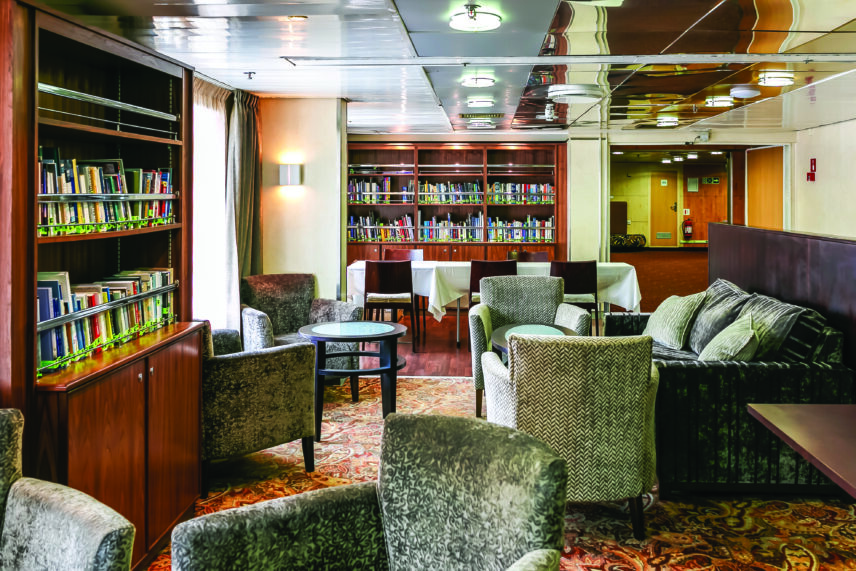
Compass Club – Library
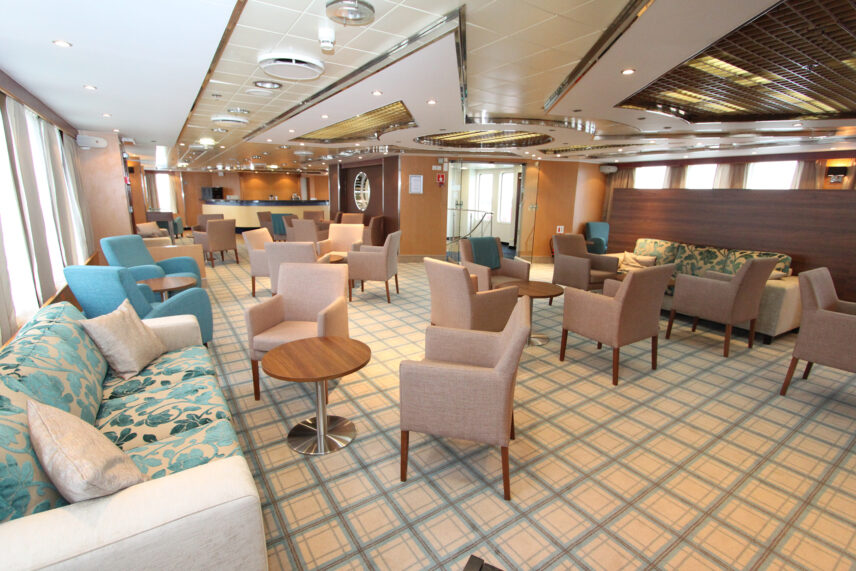
Meridian Club
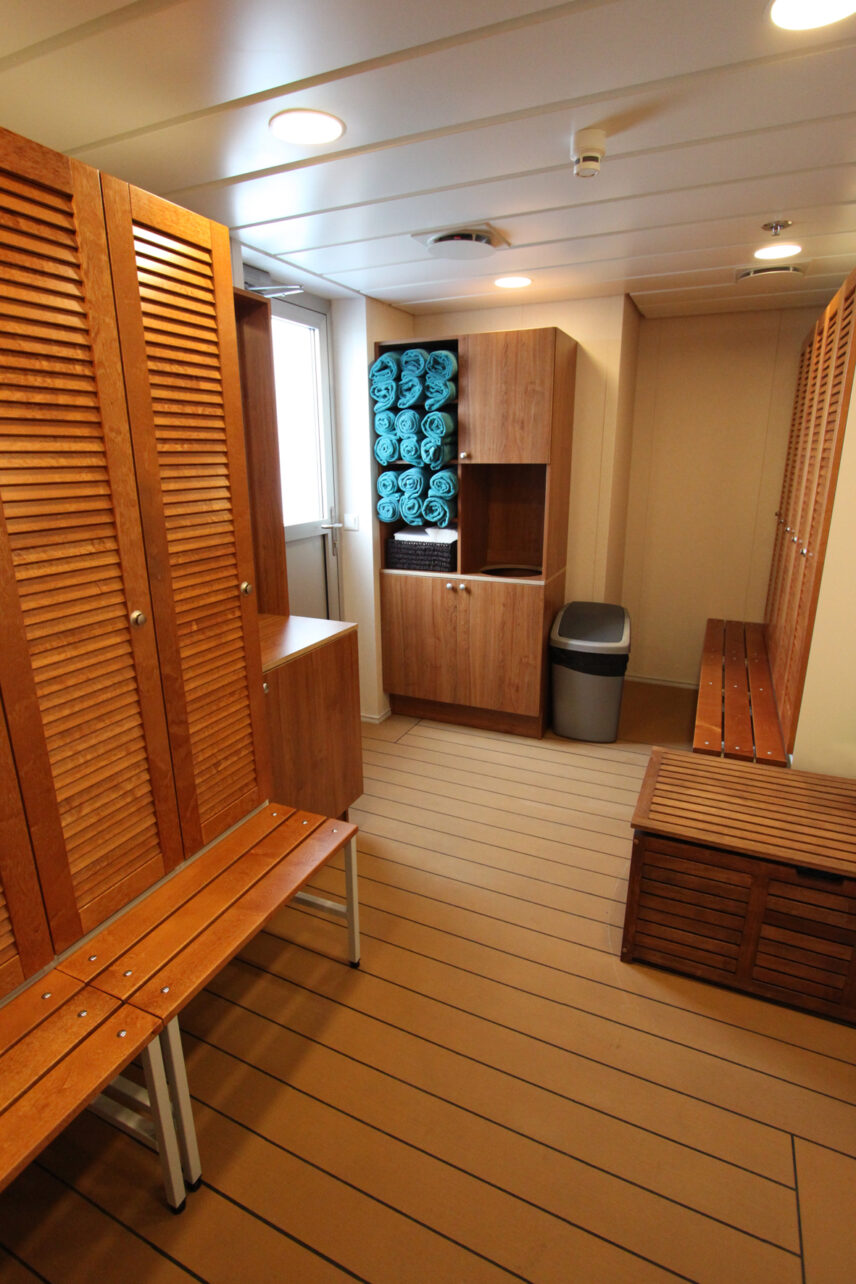
Sauna
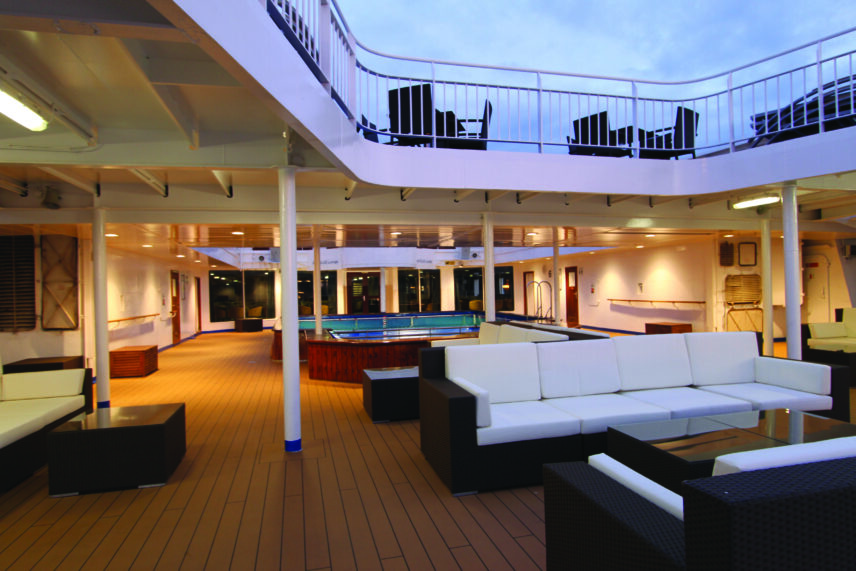
Pool Deck – Stern
Cabin Upgrades
While we have reserved the cabin options above, you may have the option to book a different cabin for an additional cost, subject to availability.
Cabin Category 10
Suite
- Forward-facing picture windows, unobstructed view
- Matrimonial bed (bigger than US double but smaller than a Queen)
- Private bath with full tub
- Refrigerator
- Hair dryer, bathrobe, towels, body wash, and hair care products
- Intercom, telephone, and flat screen TV
- Approximately 310 square feet
Cabin Category 9
Junior Suite
- Picture windows, unobstructed view
- Matrimonial bed (bigger than US double but smaller than a Queen)
- Private bath
- Sitting area
- Hair dryer, bathrobe, towels, body wash, and hair care products
- Intercom, telephone, and flat screen TV
- Approximately 270 square feet
Cabin Category 8
Superior Twin
- Two picture windows, unobstructed view
- Two lower berths
- Private bath
- Sitting area
- Hair dryer, bathrobe, towels, body wash, and hair care products
- Intercom, telephone, and flat screen TV
- Approximately 210 square feet
Cabin Category 1
Quad
- Interior cabin
- Four lower berths
- Private bath
- Hair dryer, bathrobe, towels, body wash, and hair care products
- Intercom, telephone, and flat screen TV
- Approximately 240 square feet

Trip Details
The Ocean Endeavour
While you’ll be with the Wild Women group, this isn’t an exclusive Wild Women Expeditions or 100% women-only trip. The Wild Women group size can range from 10 to 40 women, but there will be other passengers along for the journey. In addition, the staff and crew of the Ocean Endeavour, a 198-passenger ship, will also be co-ed.
Our Expedition Cruise Partner’s Client Portal
Approximately three to four months prior to departure, you will receive an email with a unique URL link to our partner’s information portal. Please carefully and thoroughly complete these forms with your current personal and medical information, dietary preferences or requirements and other information as requested.
Arrival and Departure
This expedition starts in Toronto, Ontario (airport code: YZ) and finishes in St. John’s, Newfoundland (airport code: YYT).
Learn More: Watch the Webinar
The Wild Women Way
If you’re wondering how we roll, it’s together. The Wild Women Way is our modus operandi, our mantra and our rock solid foundation. You can learn more about our Wild Ways HERE.

How We Support You
Ready for a big adventure? On this trip we brave the elements, hike uneven coastal terrain and have several Zodiac transfers (from the ship to Zodiac and from Zodiac to shore). Yes, it can be a challenge, but you’re never alone. Like thousands of women before you, you’ll draw on the strength you didn’t know you had and tap into your inner explorer.
Like all our trips, this trip can be scaled to suit different abilities and comfort levels. Still have concerns? Let’s talk about it.
What the Trip Entails
- Entering and exiting the Zodiacs
- Maneuvering around tight spaces
- Walking on uneven terrain
- Being on a boat for an extended period of time
- Due to strong currents, there may be moderate movement on the vessel while navigating (most passengers are not affected)
- If you choose to go on the kayaking excursions, some kayaking experience is required
- Please note that Wild Women small ship expeditions are not 100% Wild Women exclusive or women-only. Staff, crew and fellow passengers on the Ocean Endeavour will be co-ed
- Physical Rating: Easy (Some physical activity included. Trips are the most leisurely with an average of 1-4 hours of physical activity each day.)
